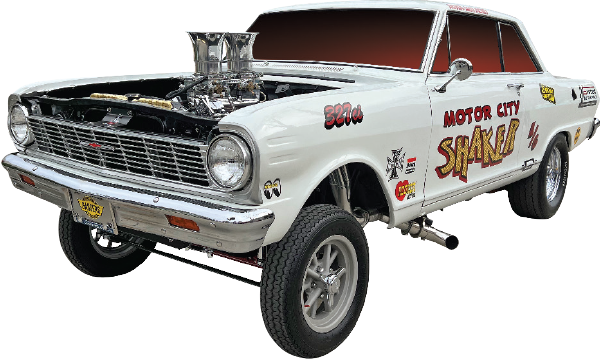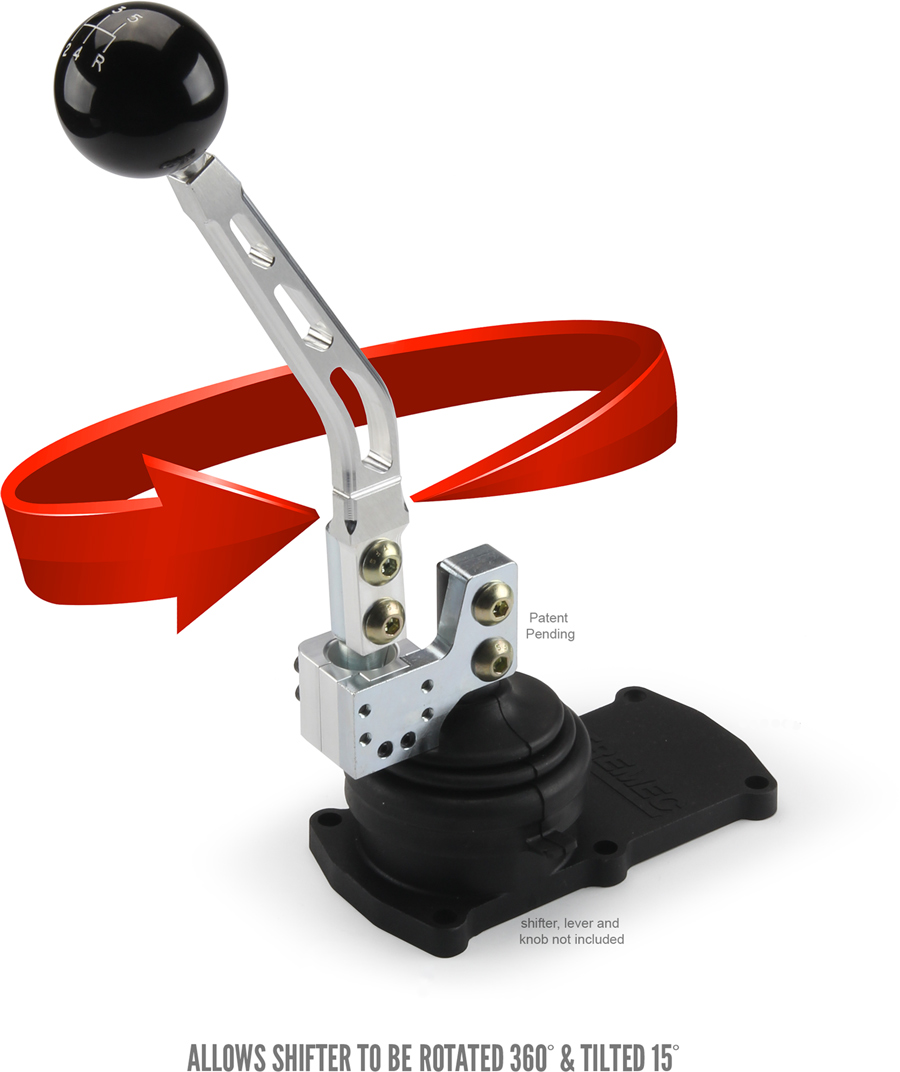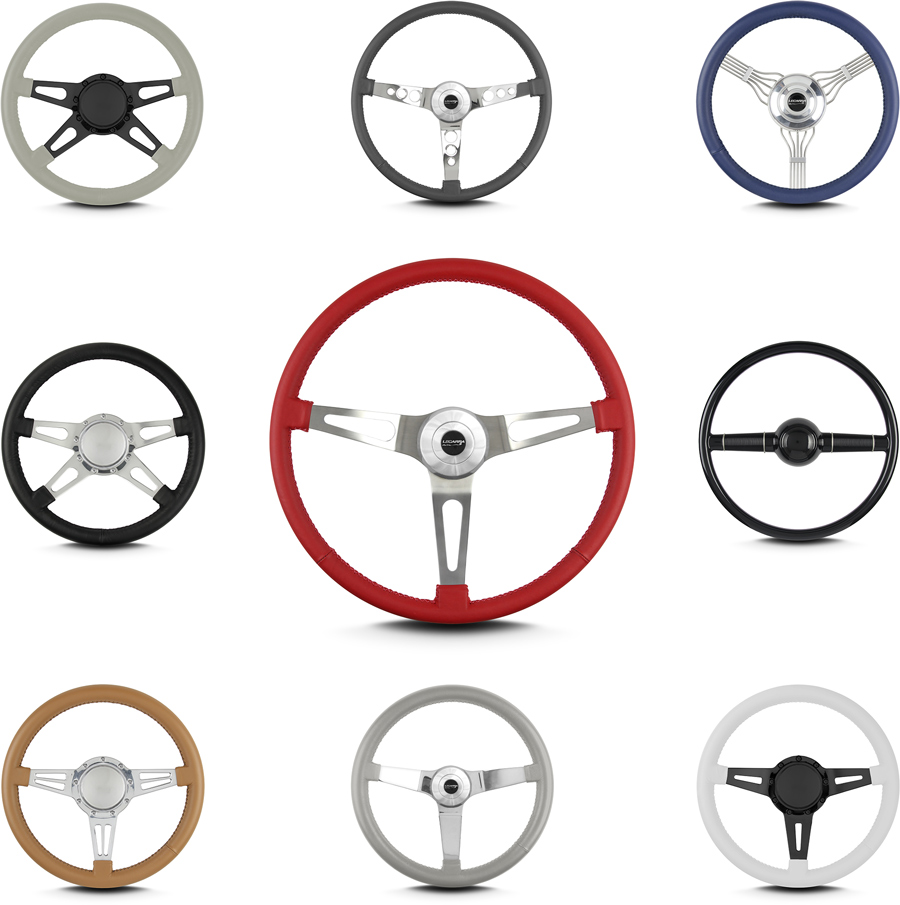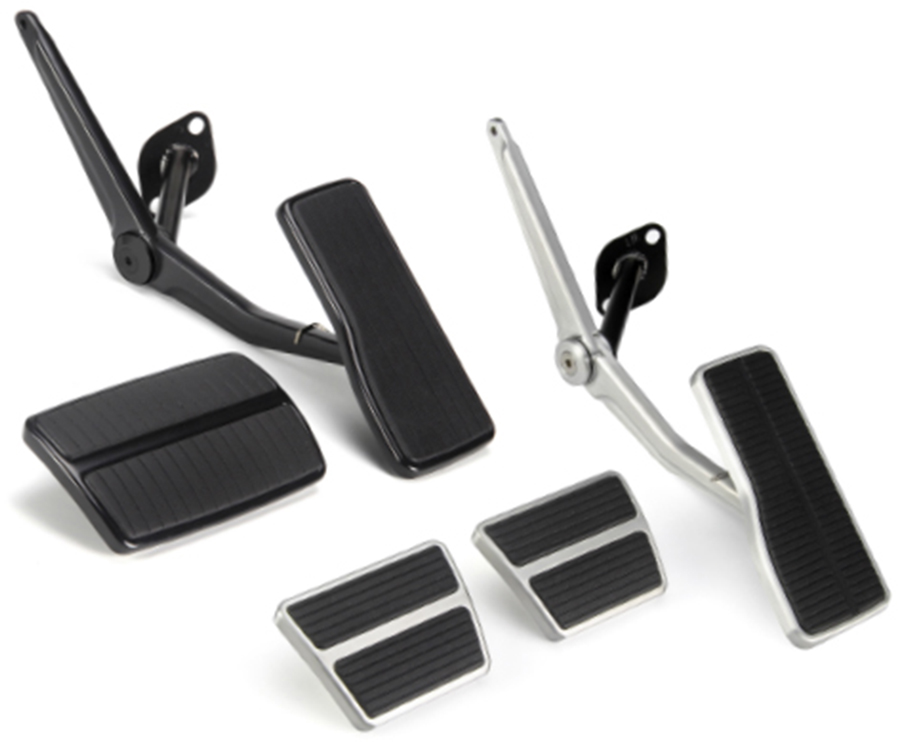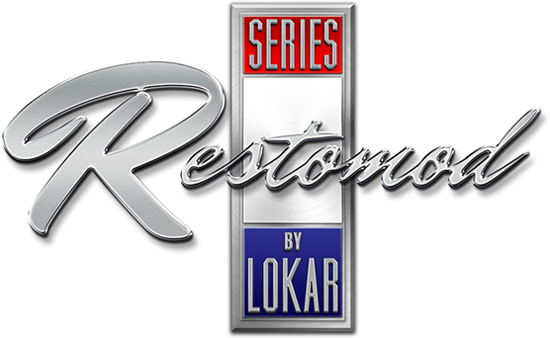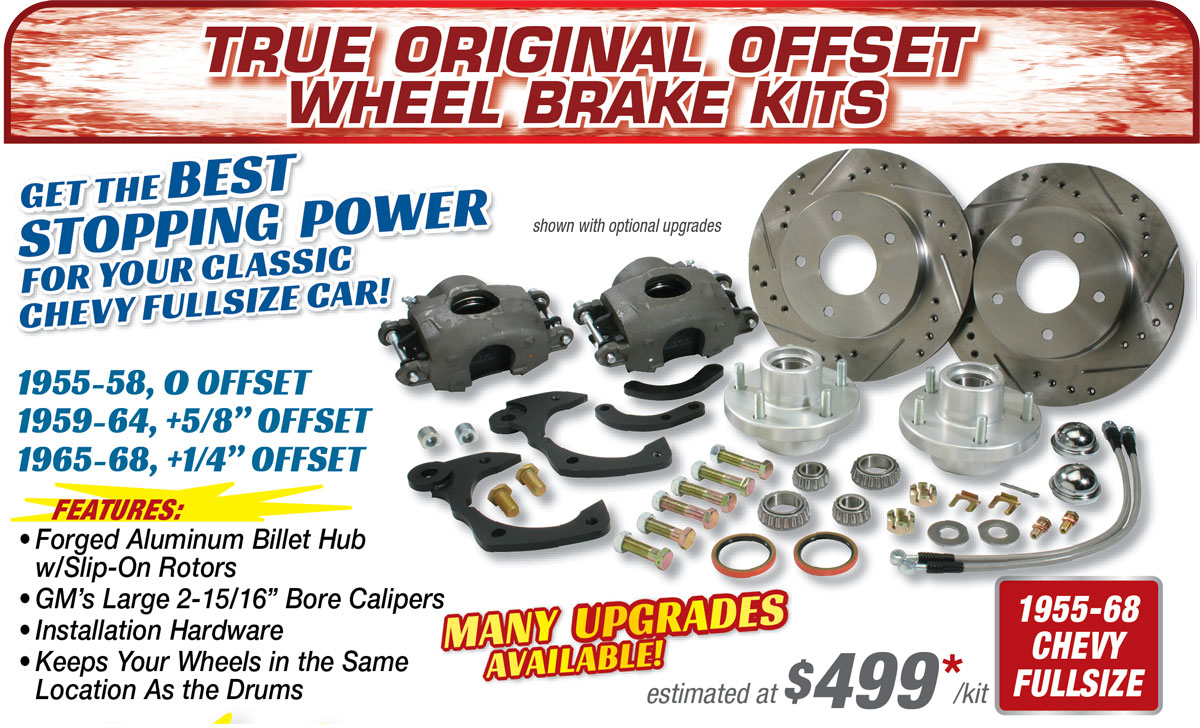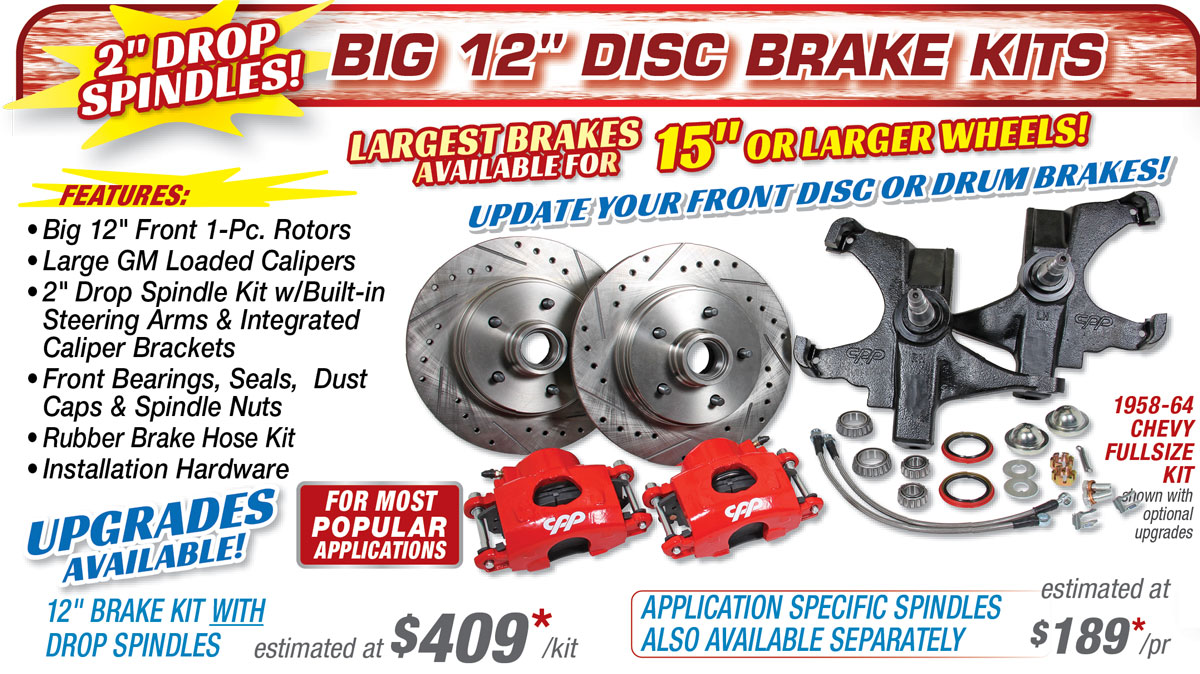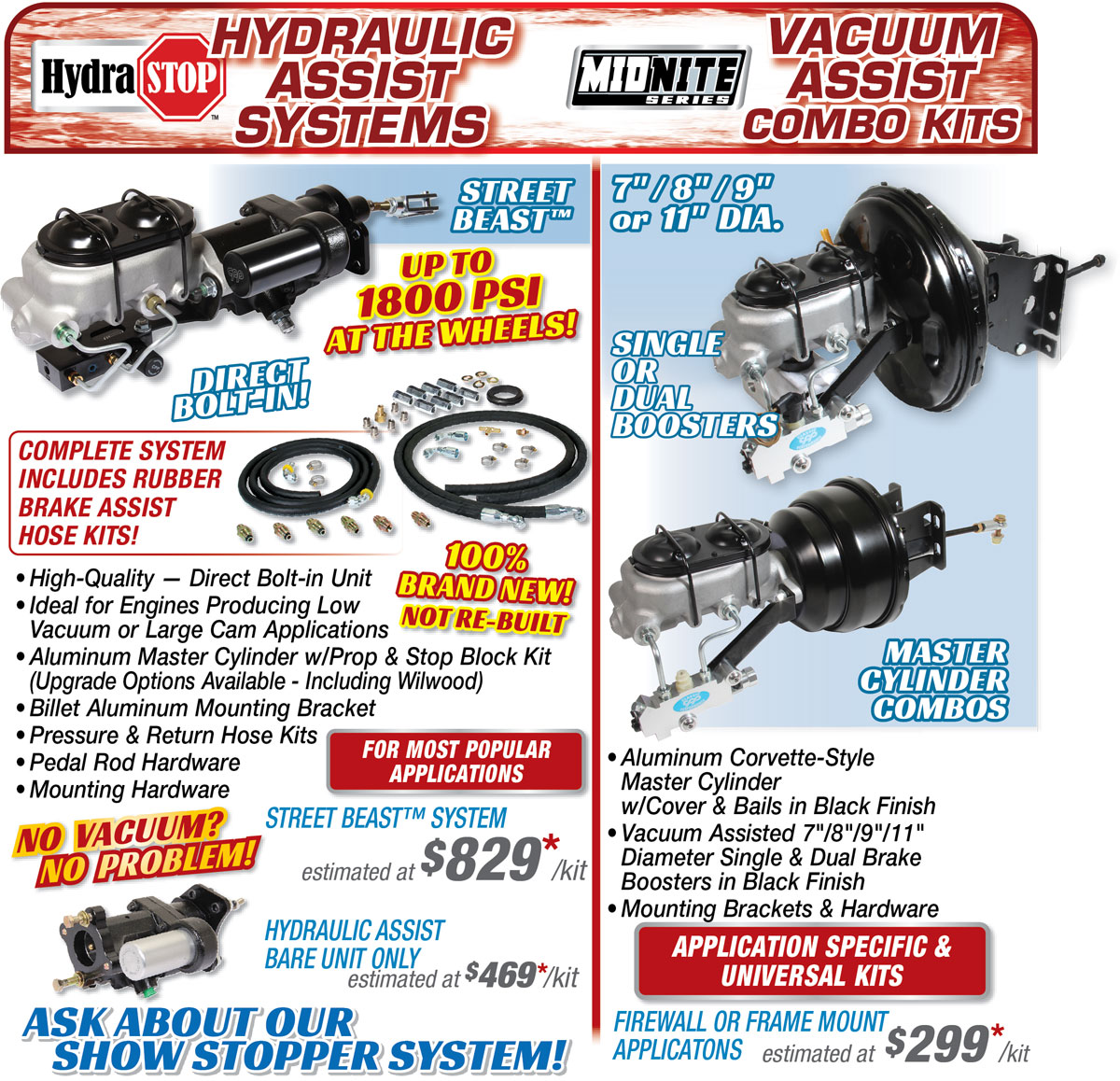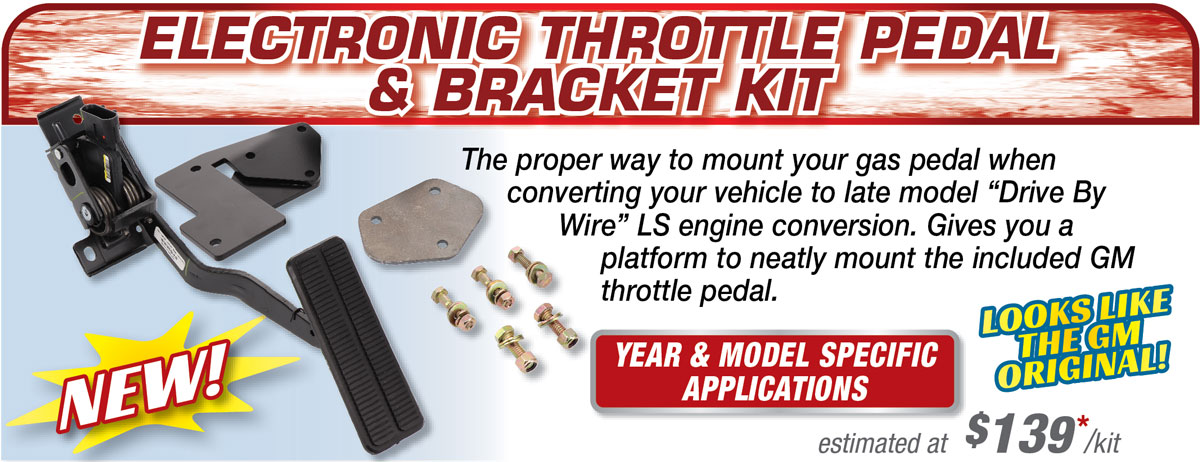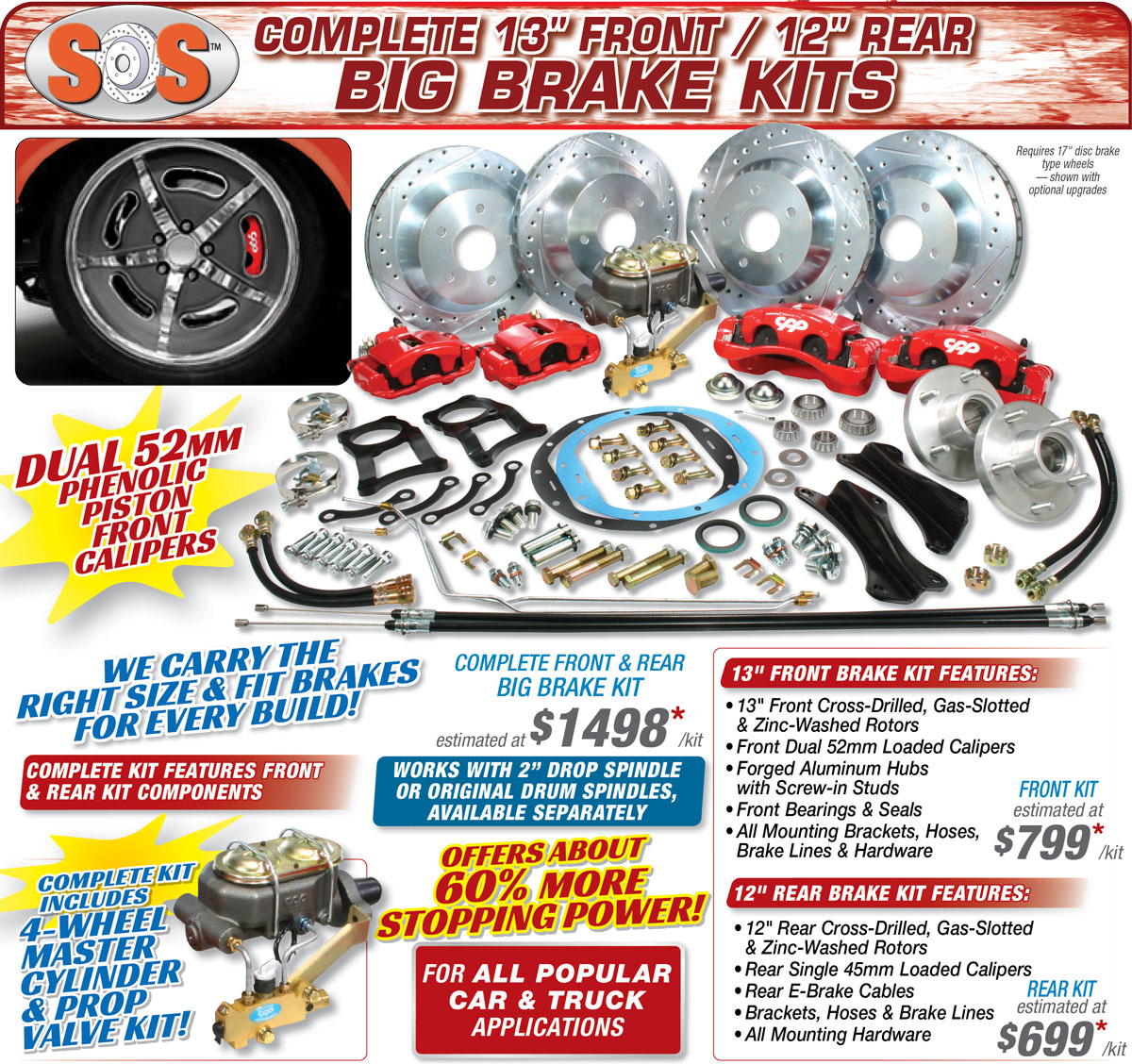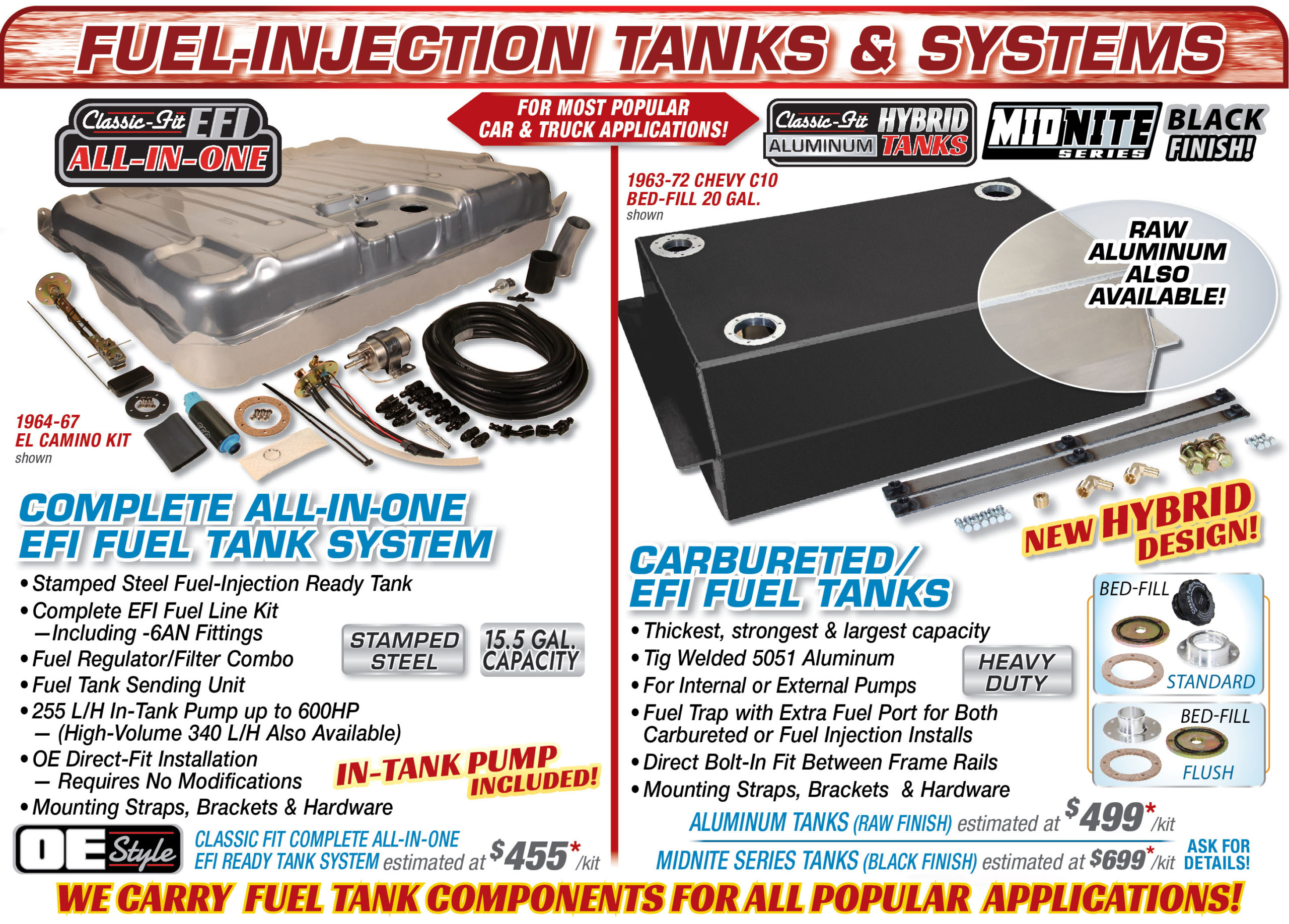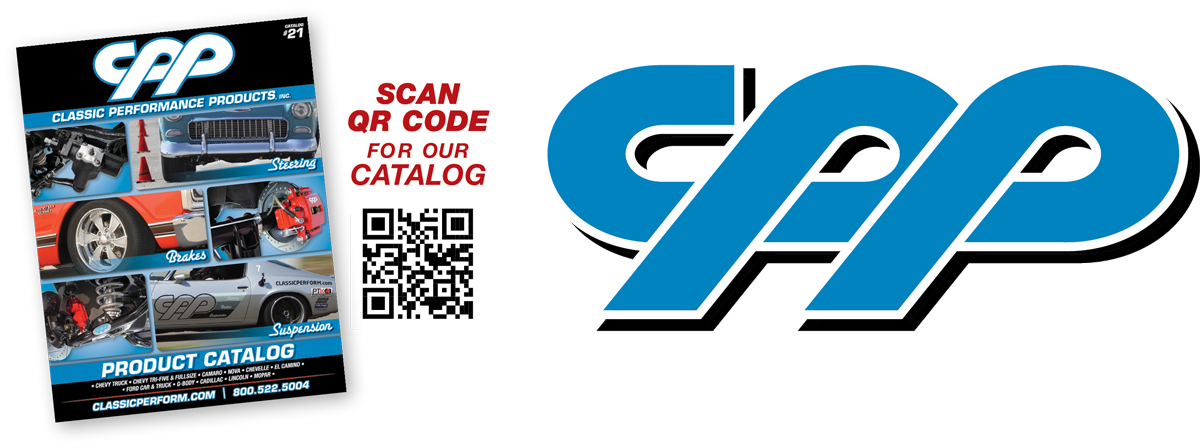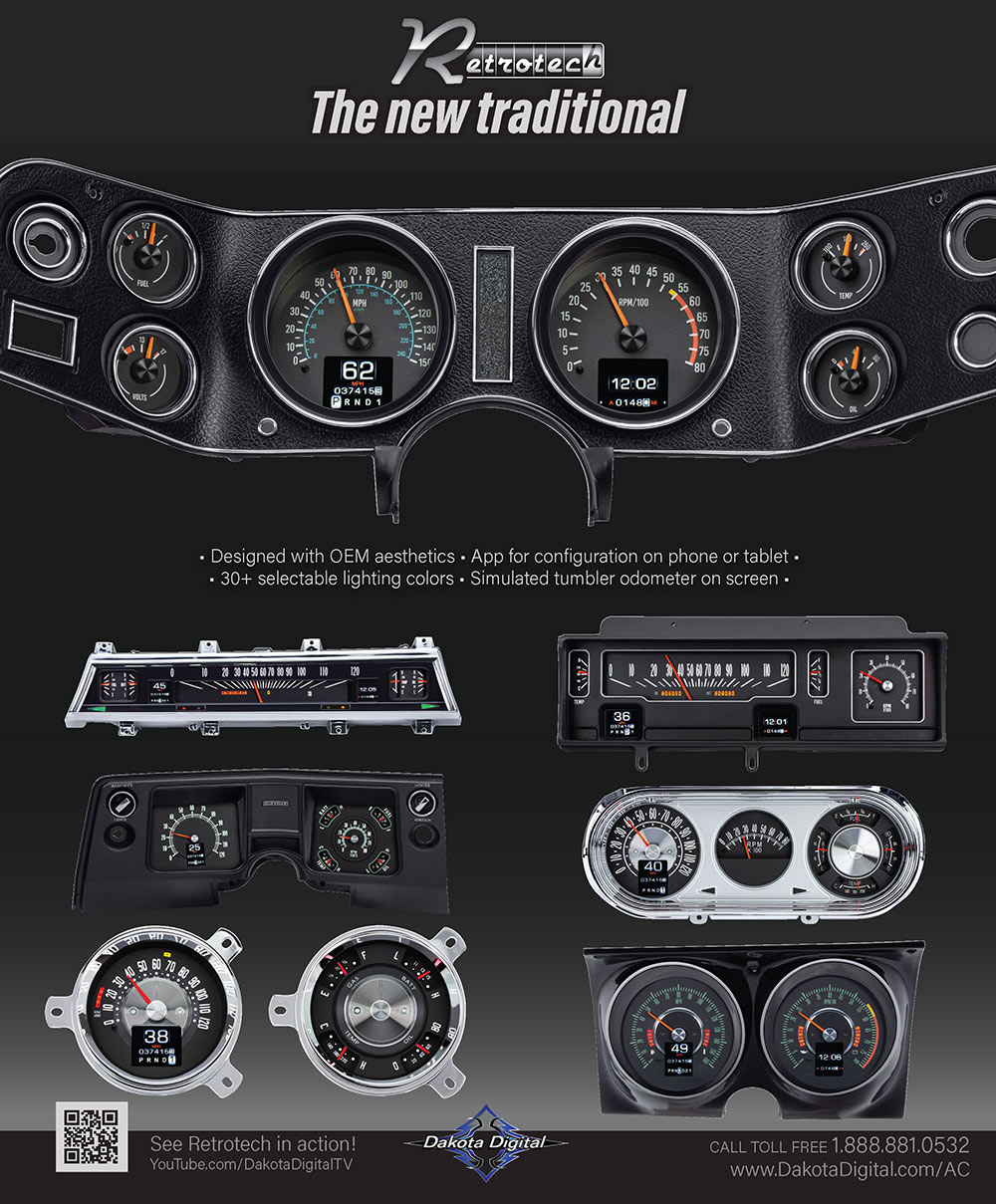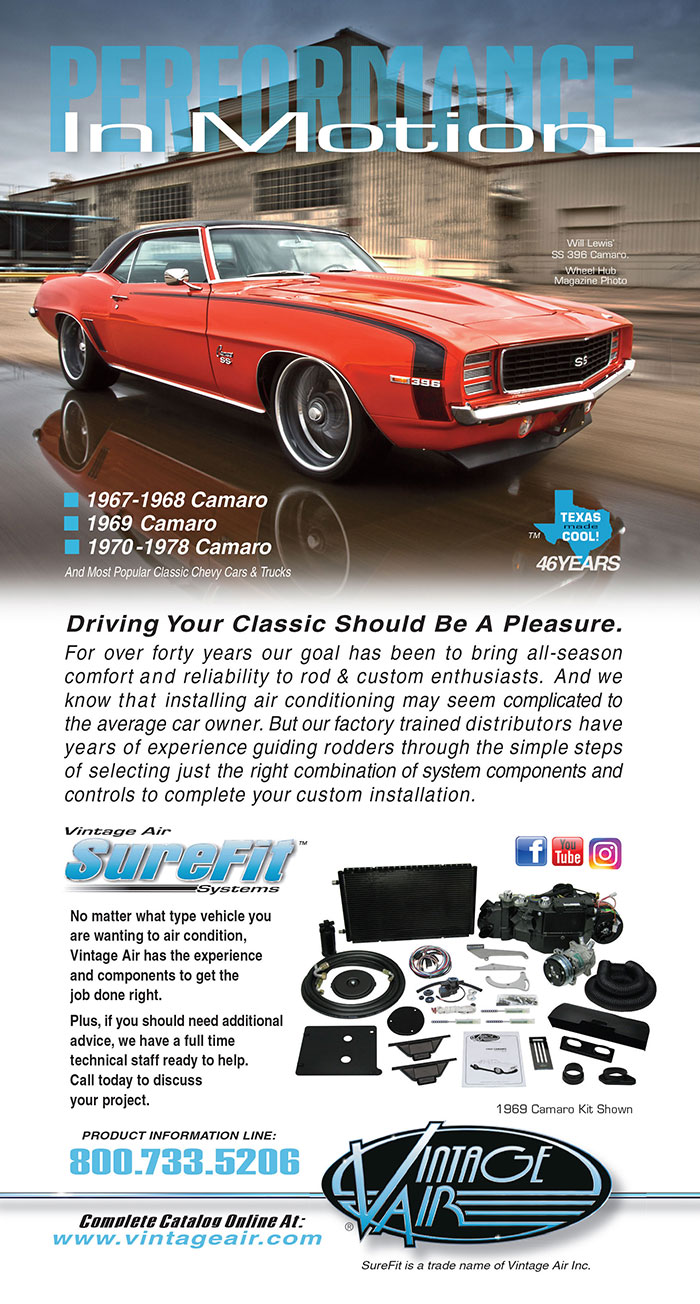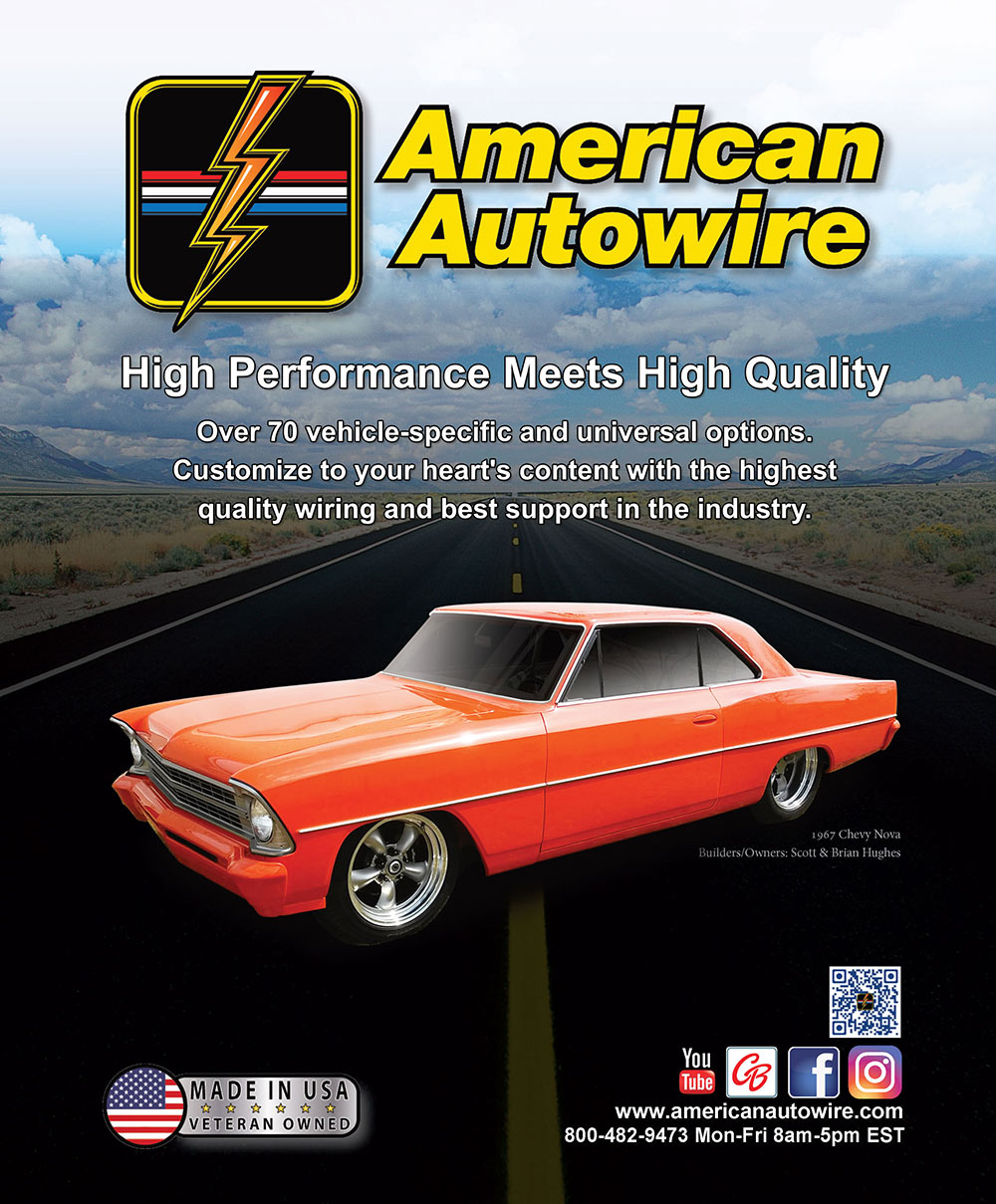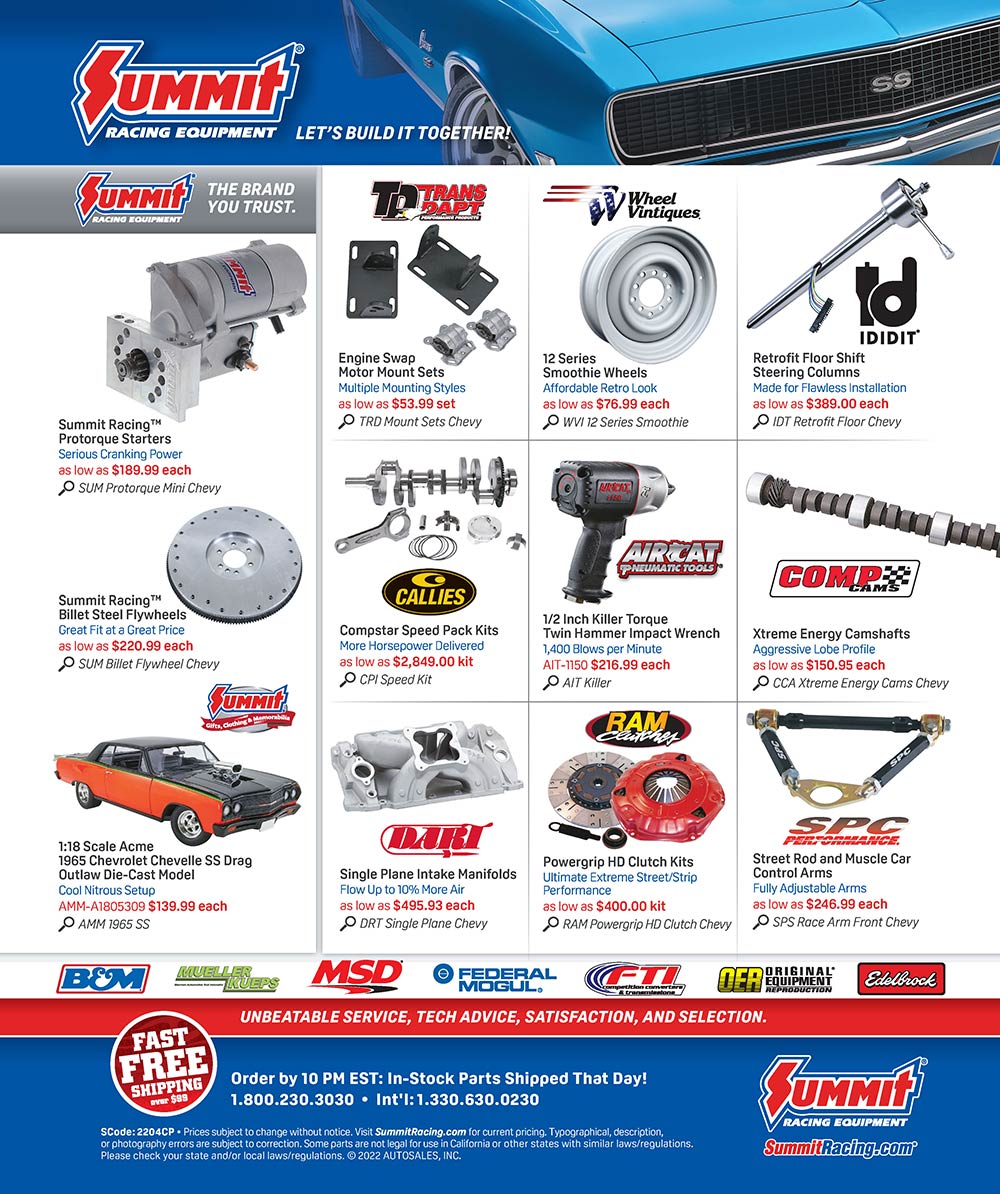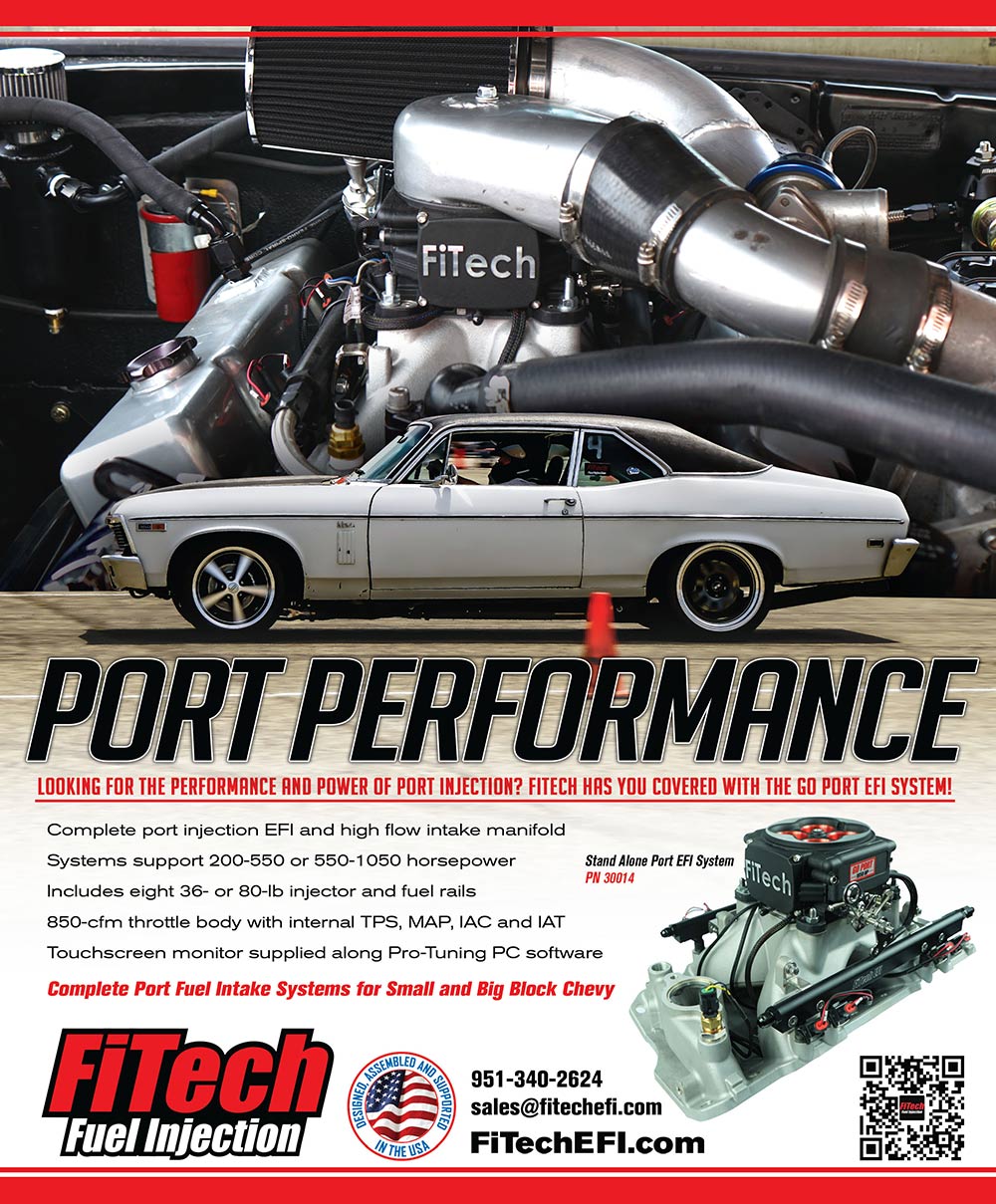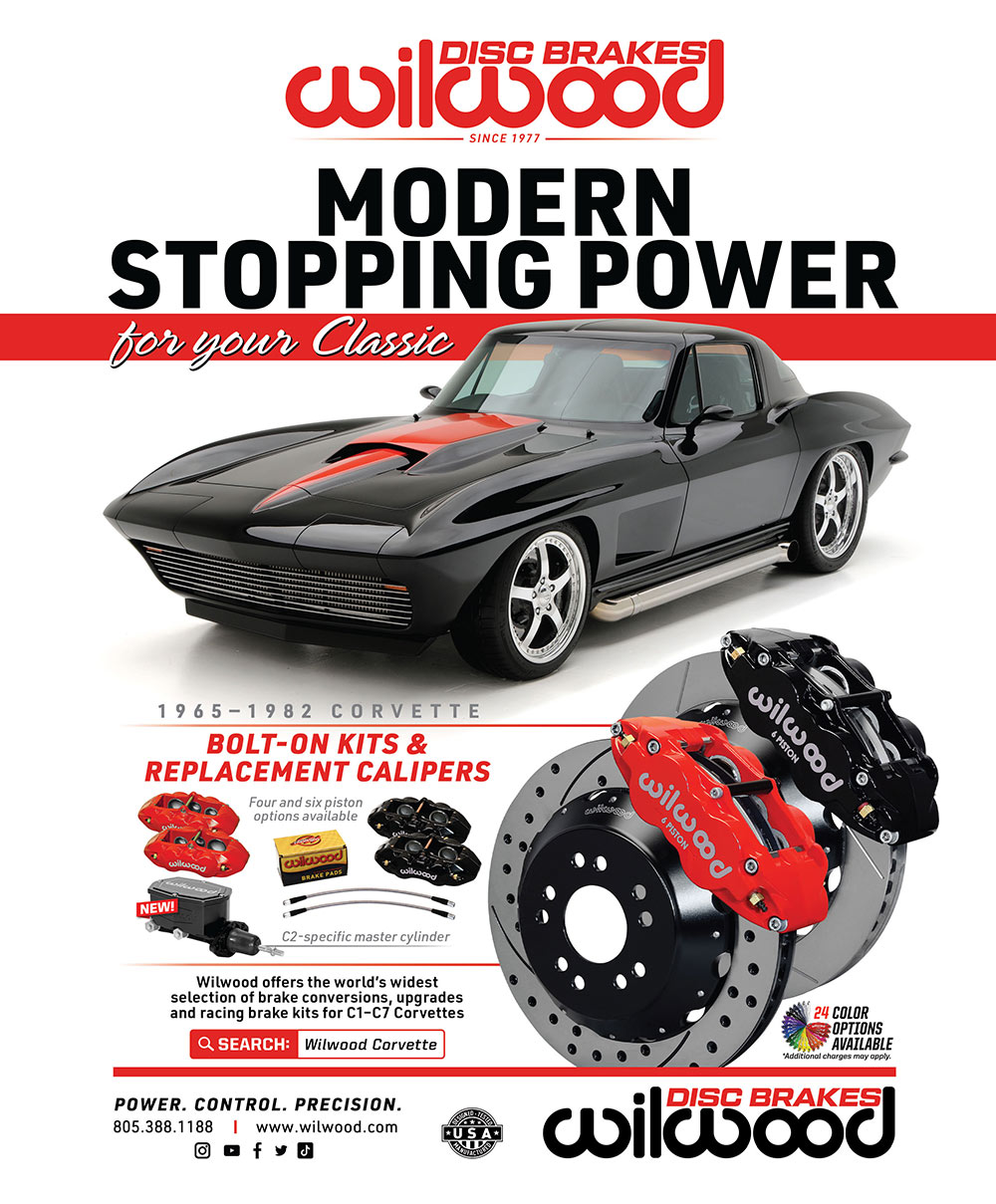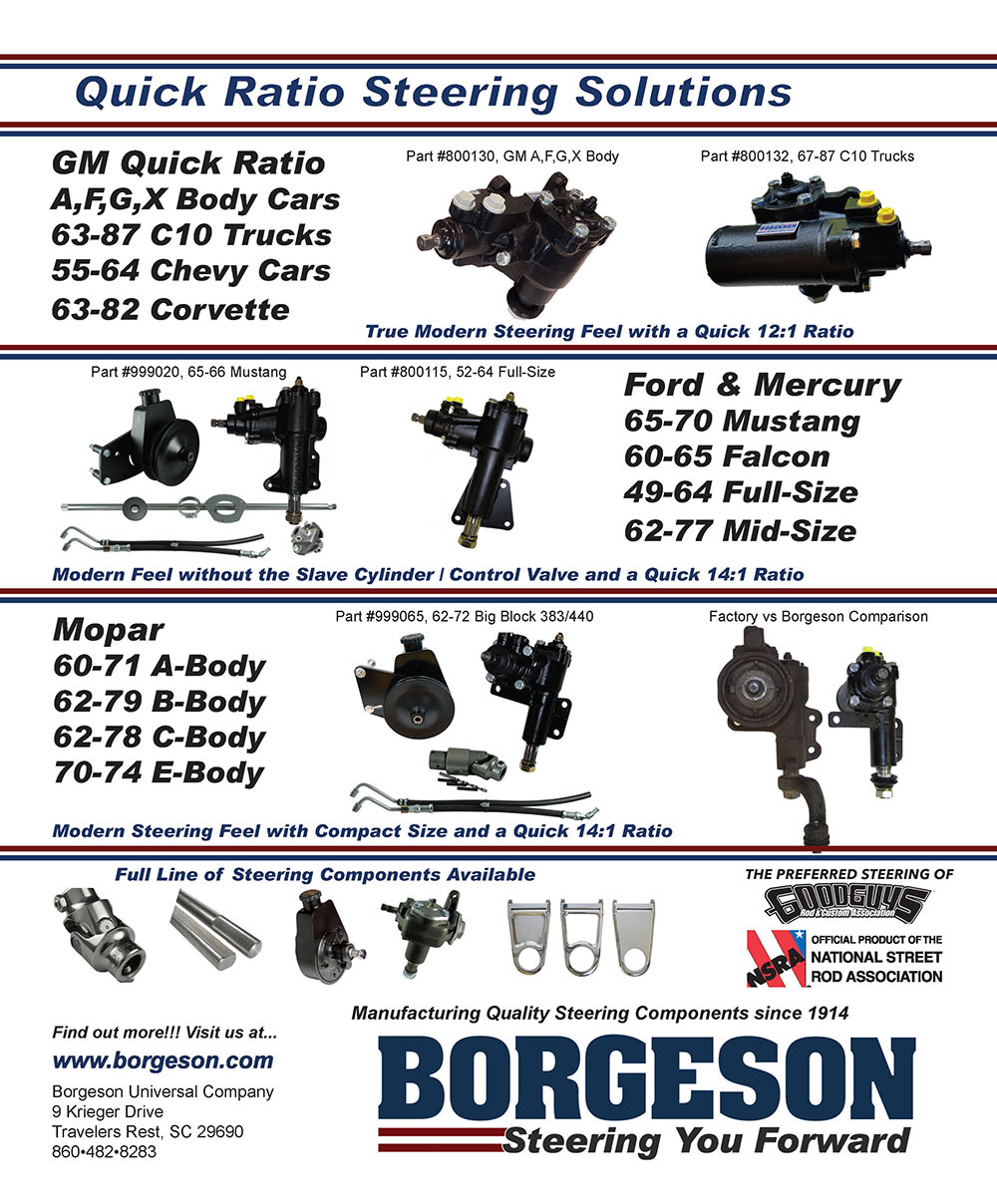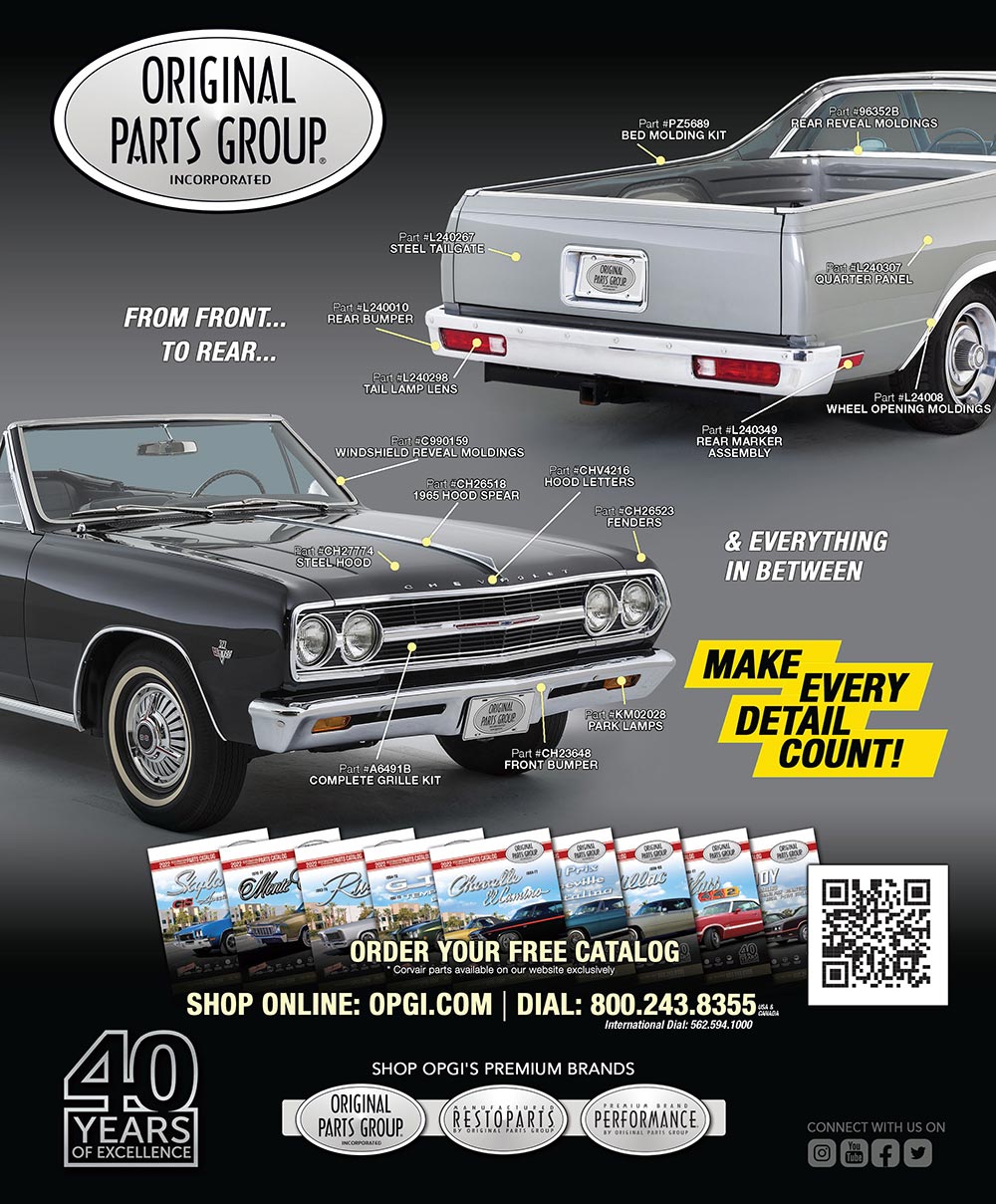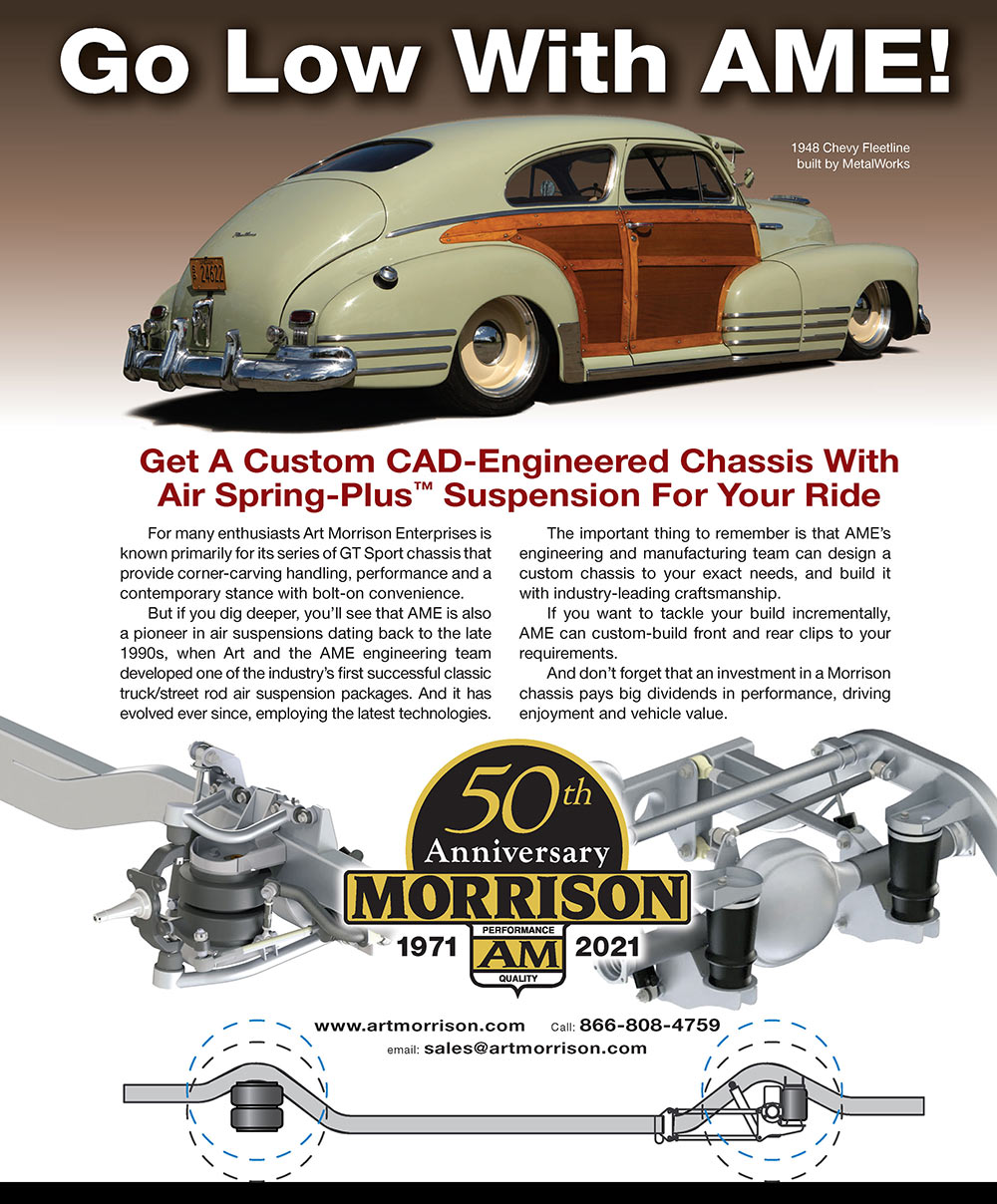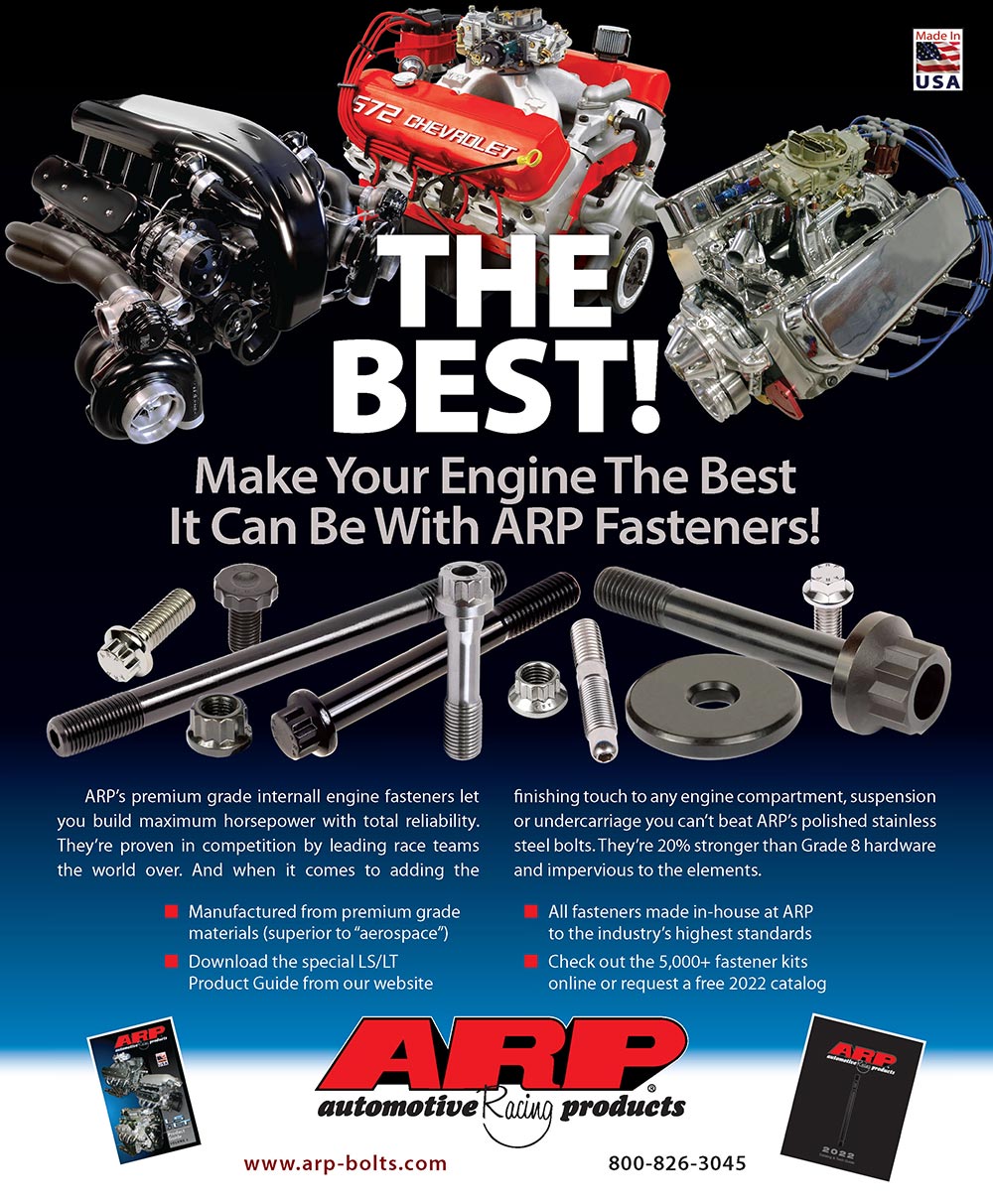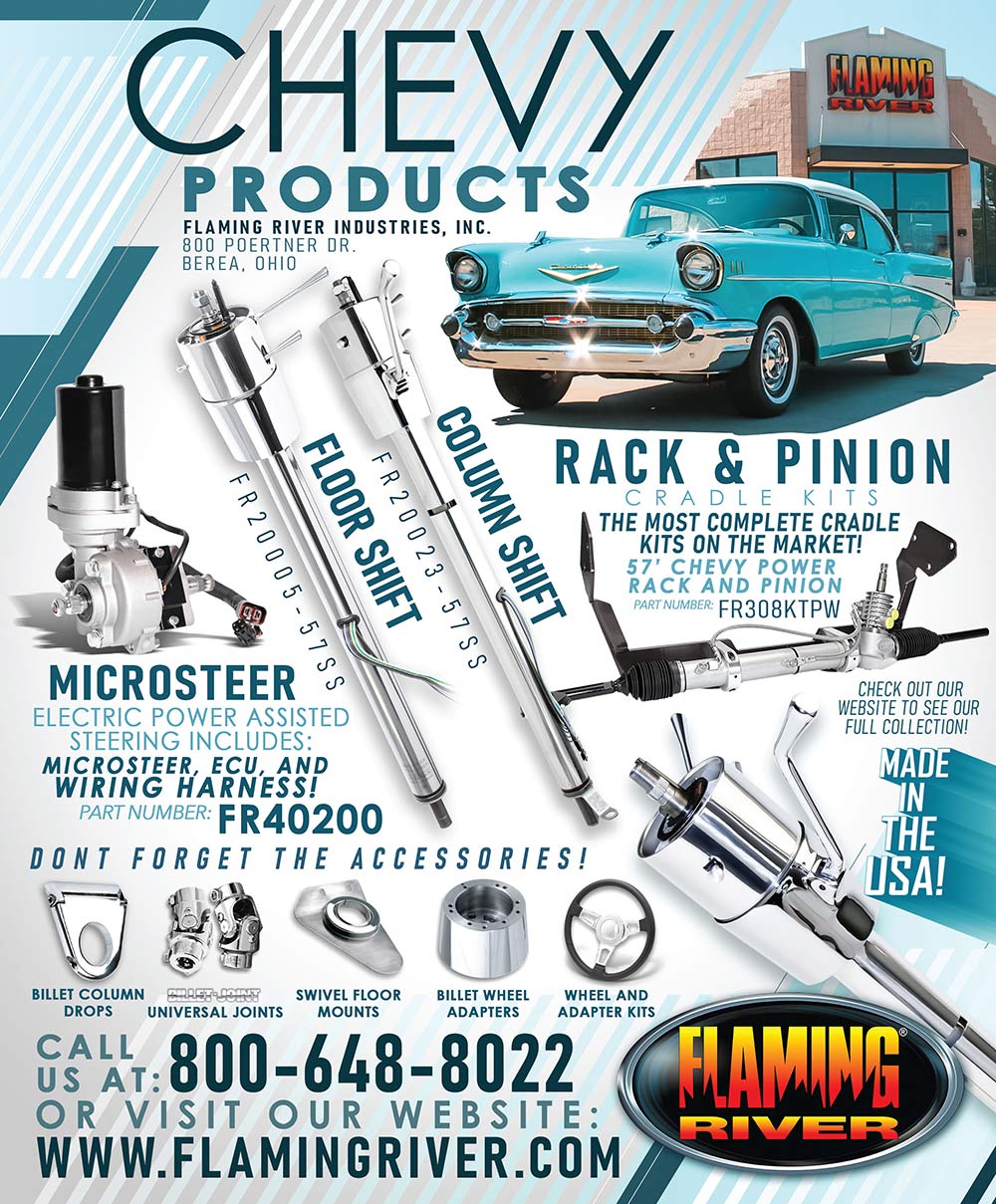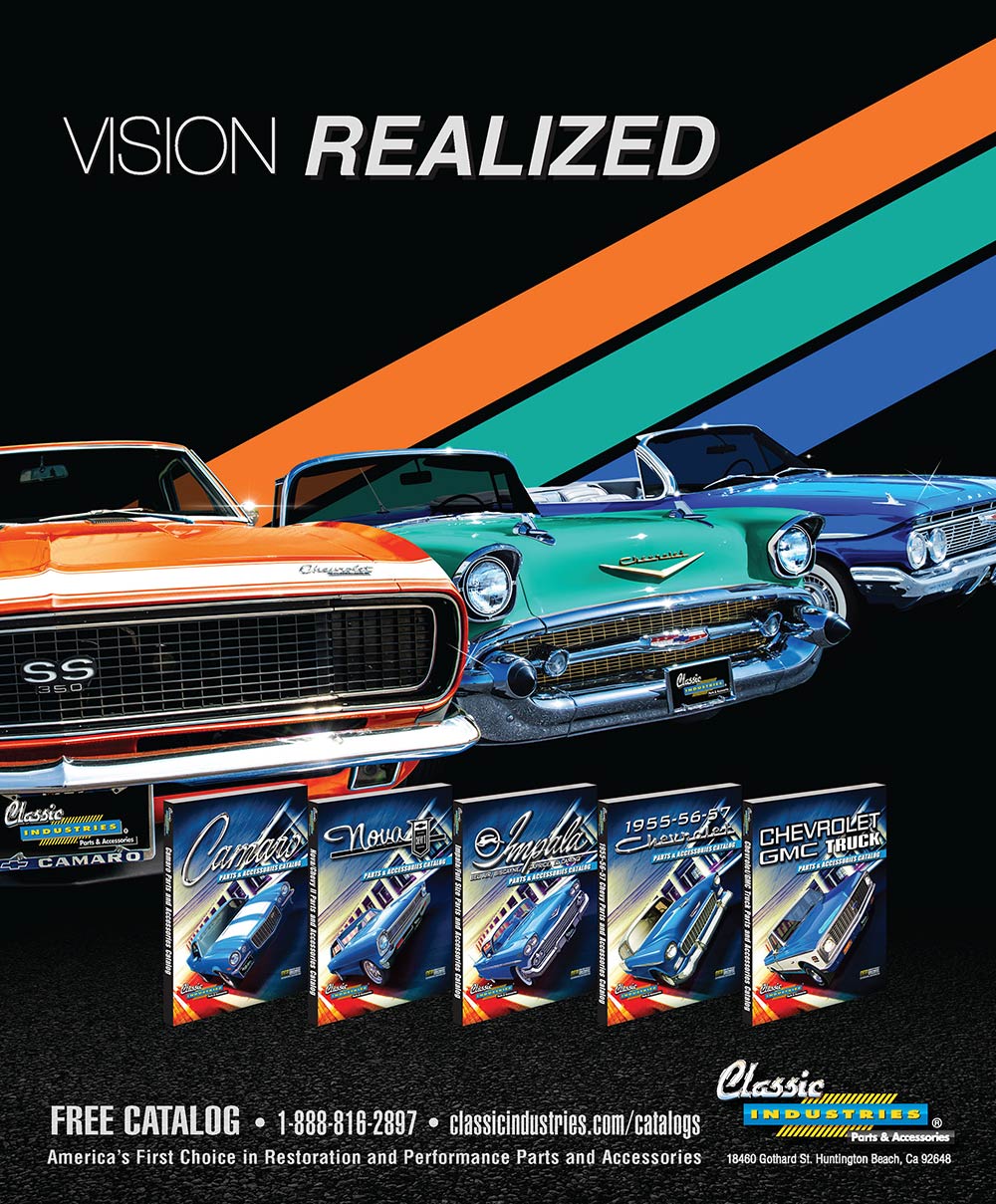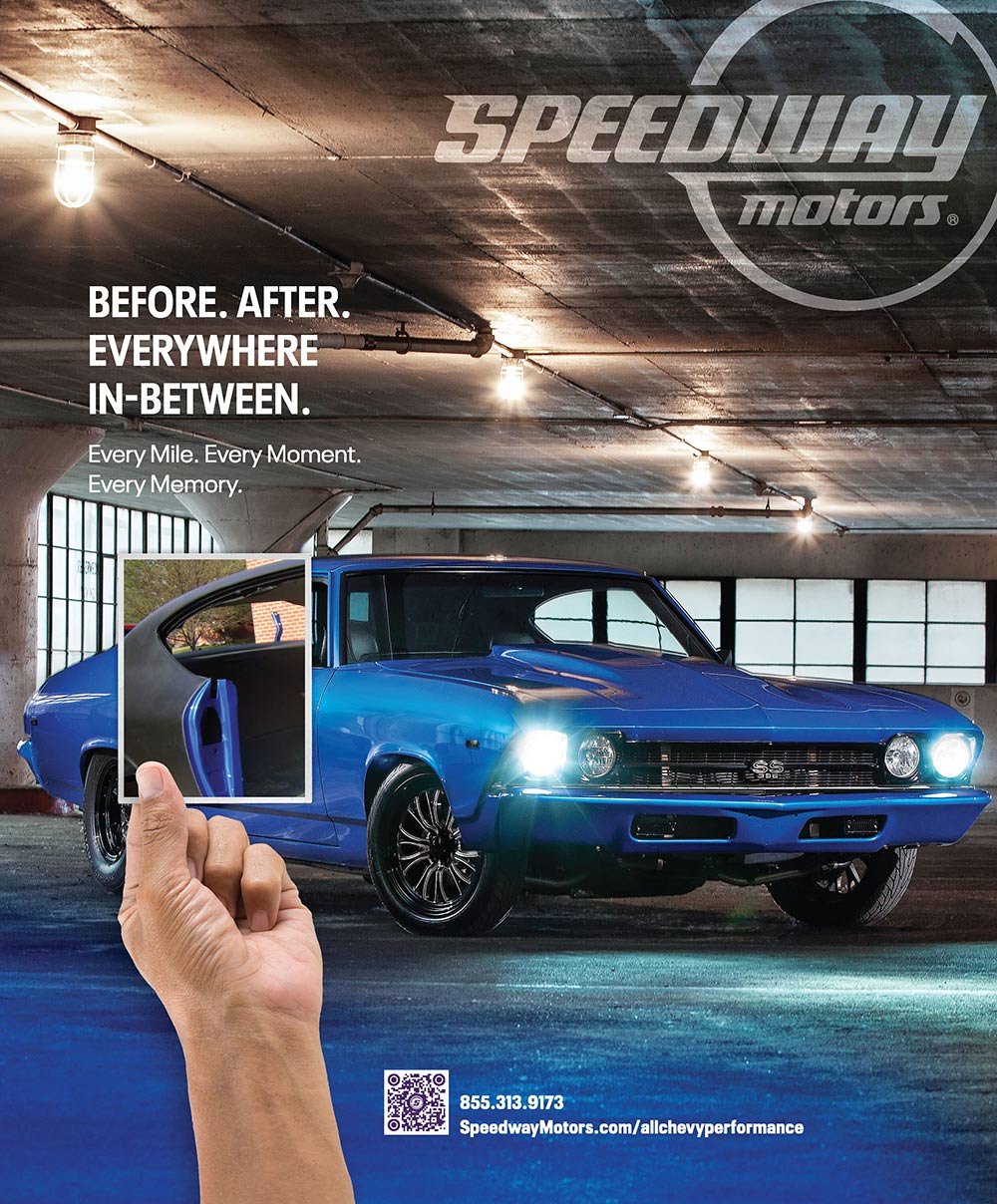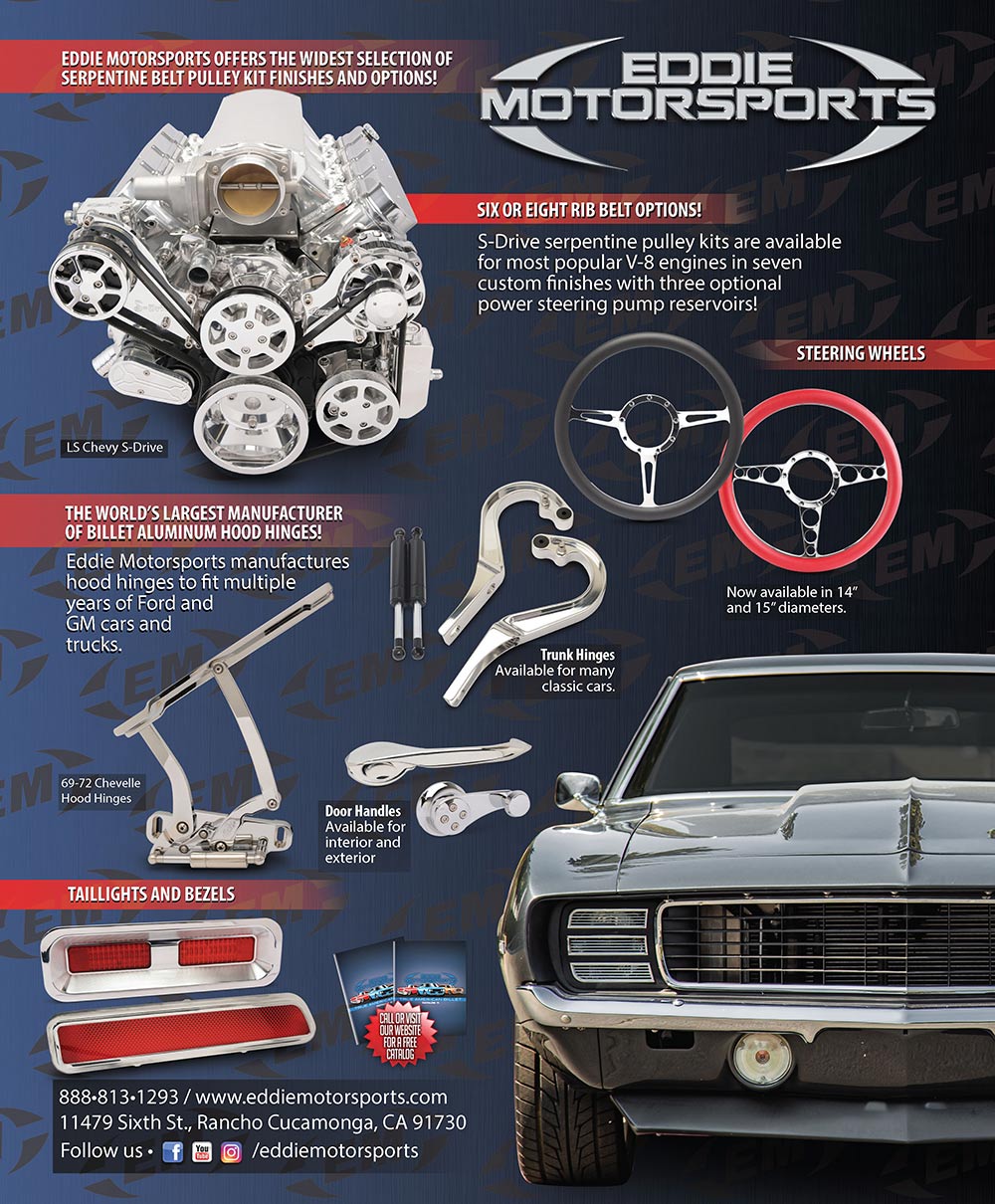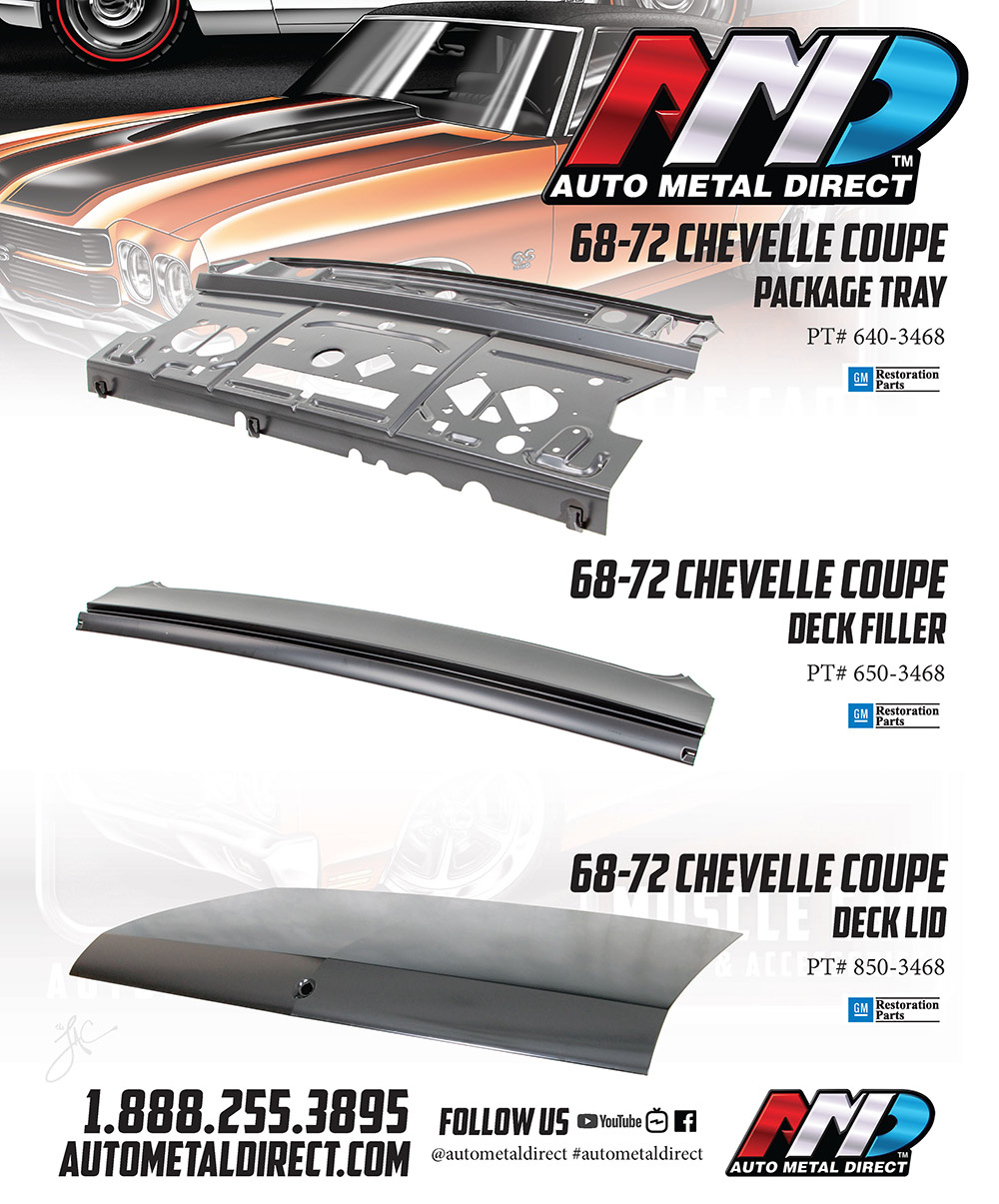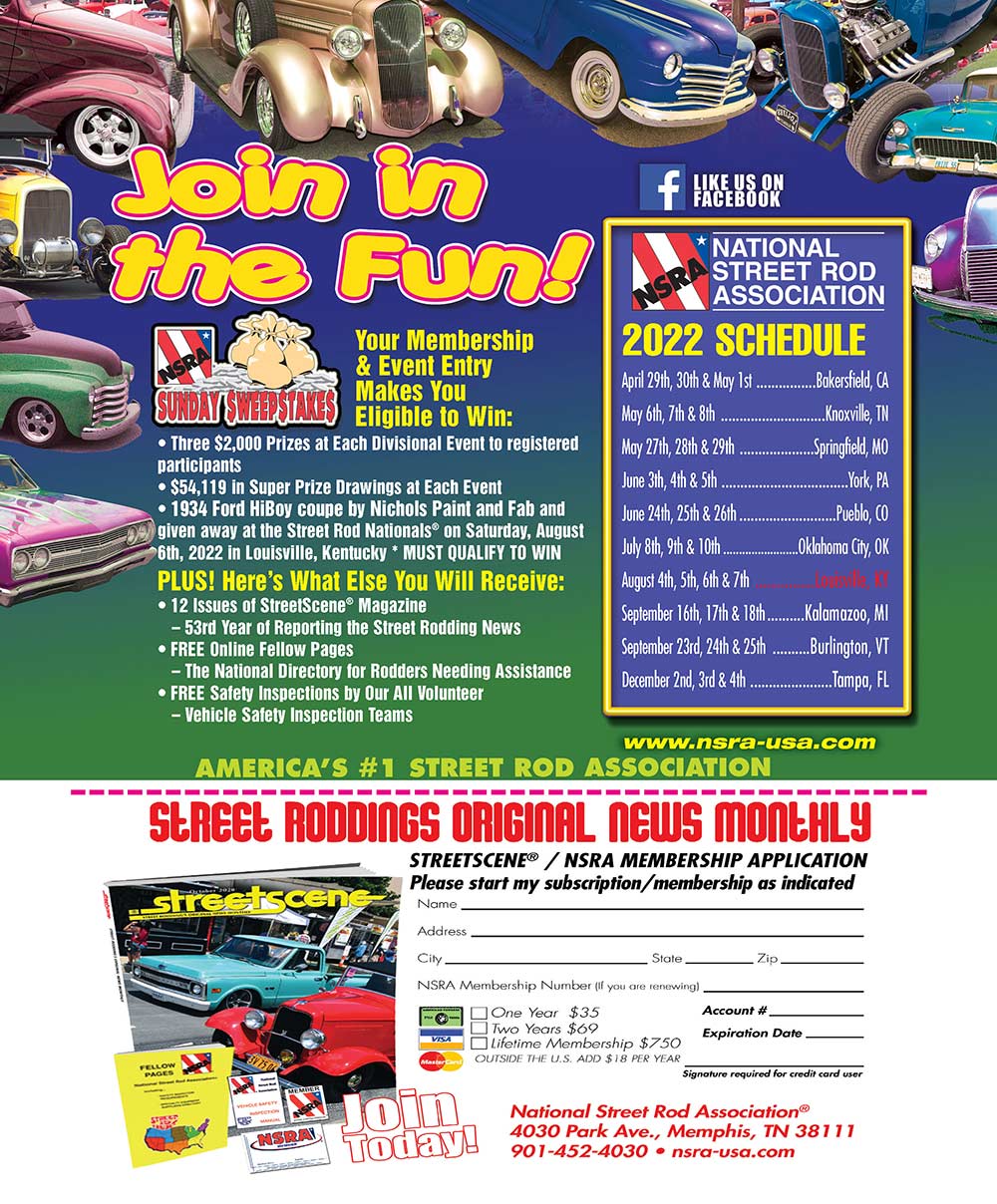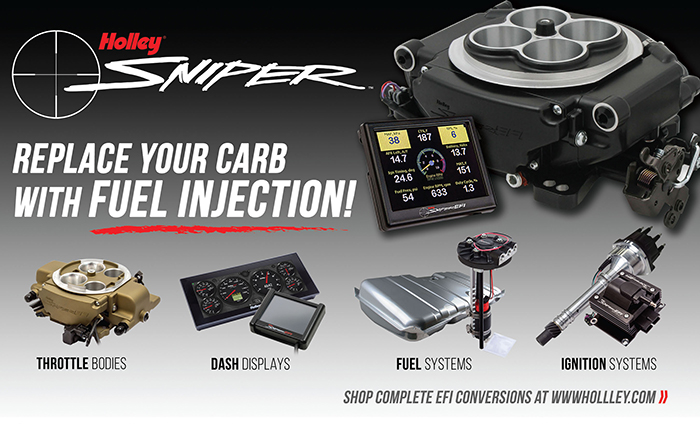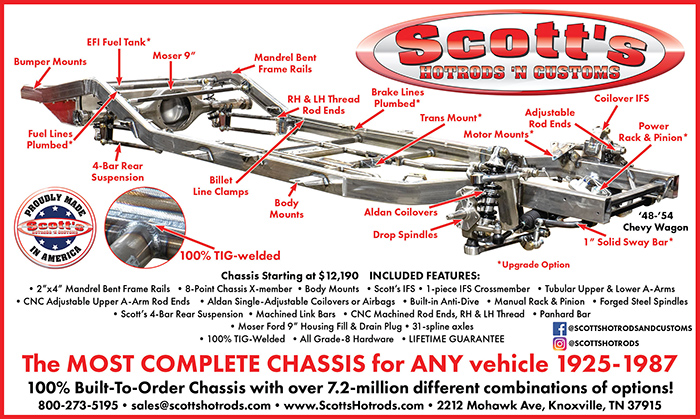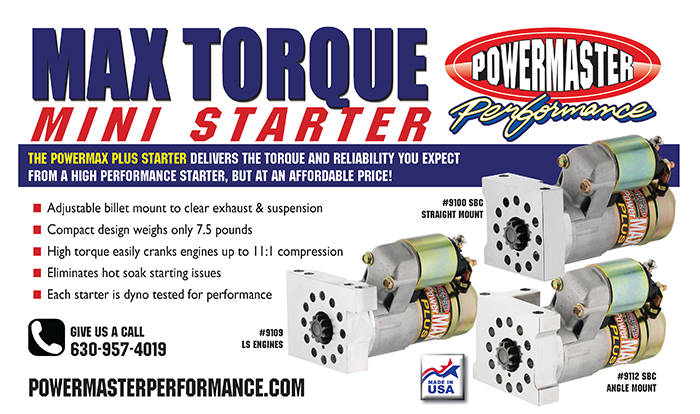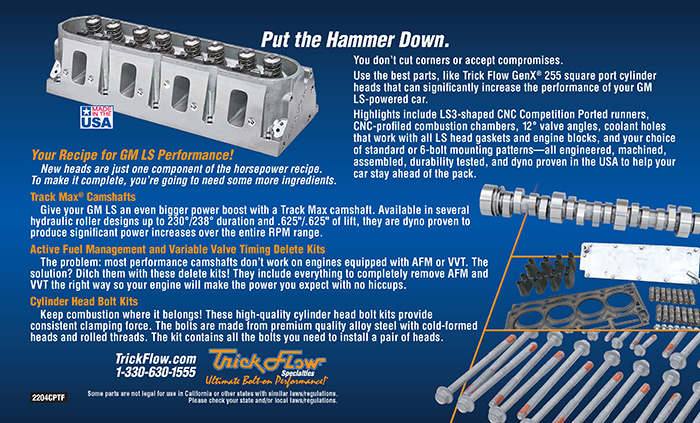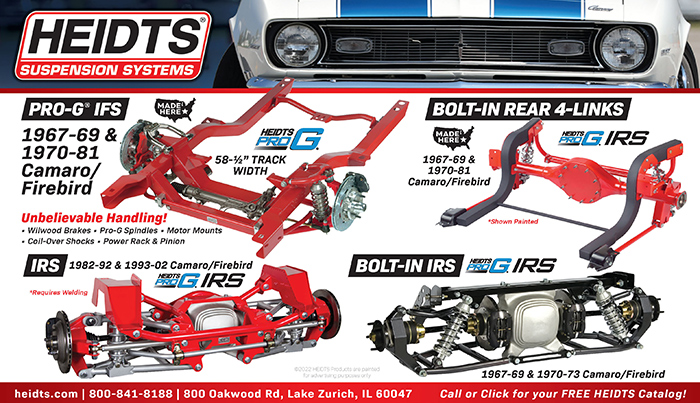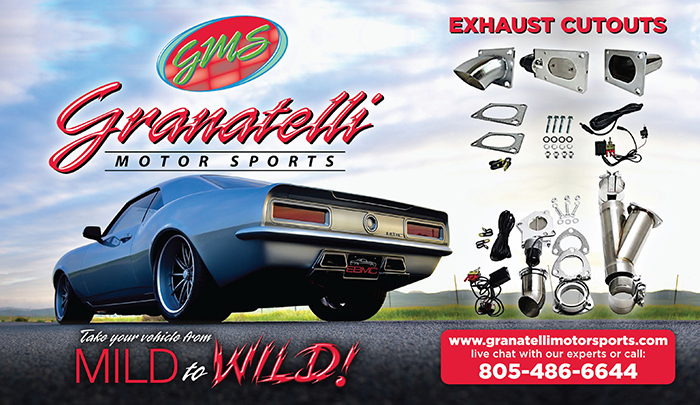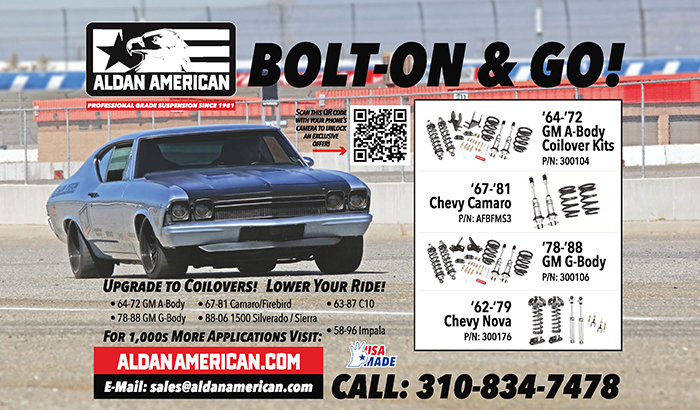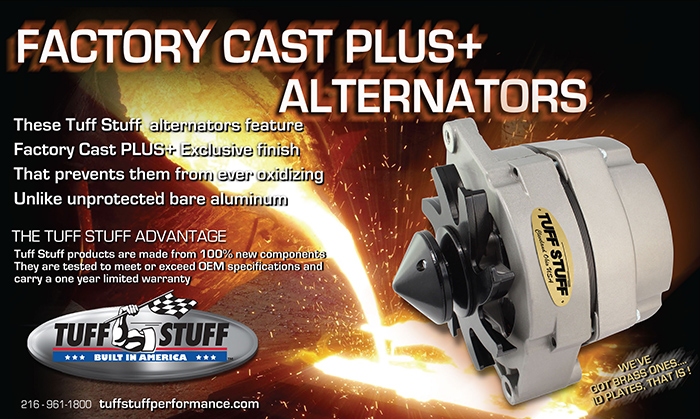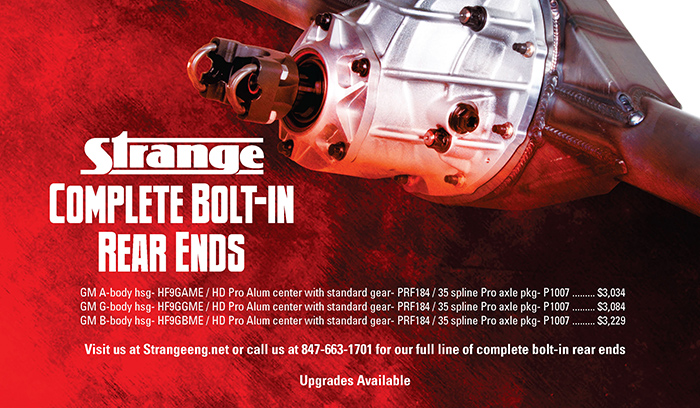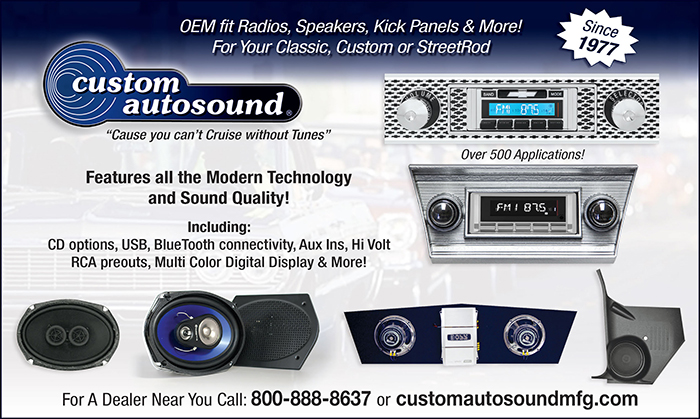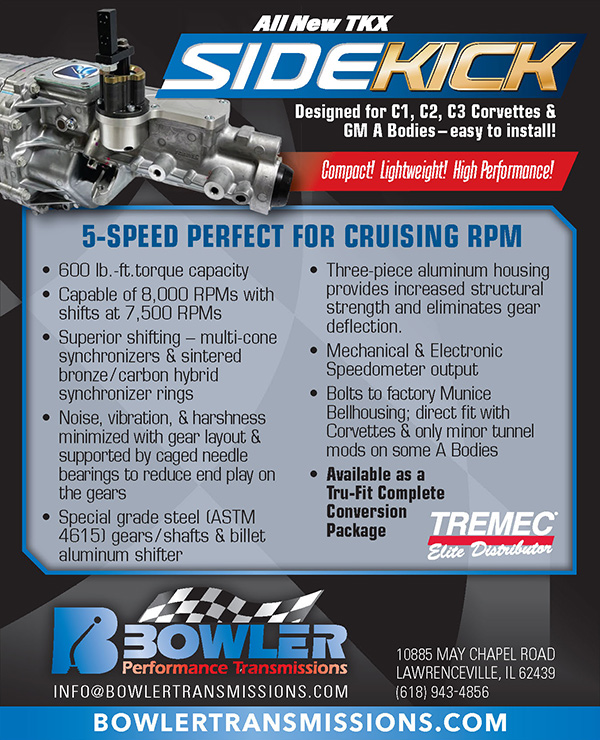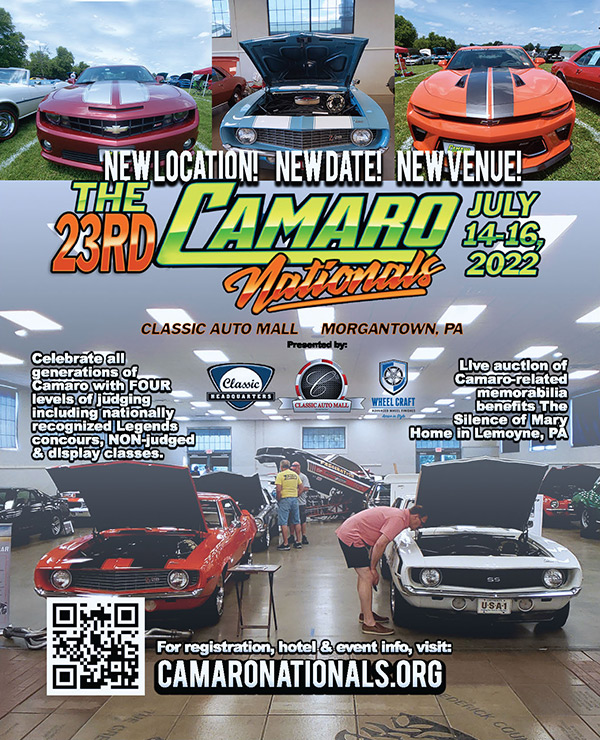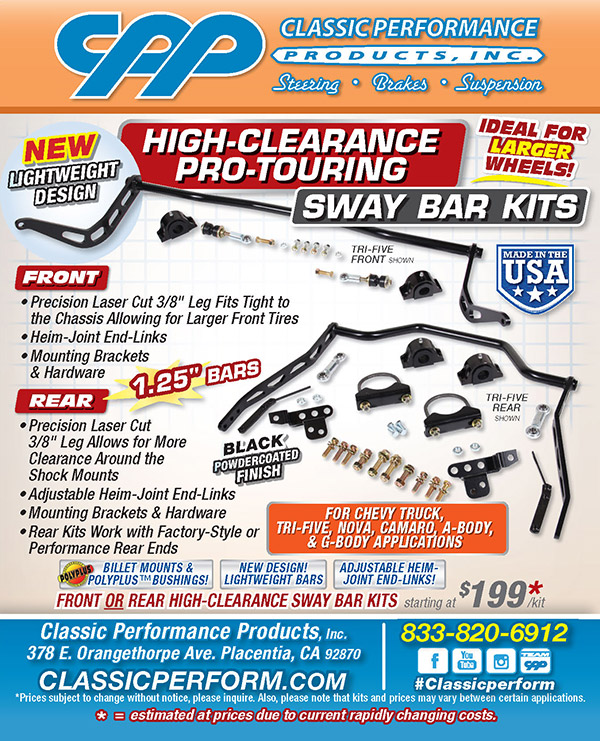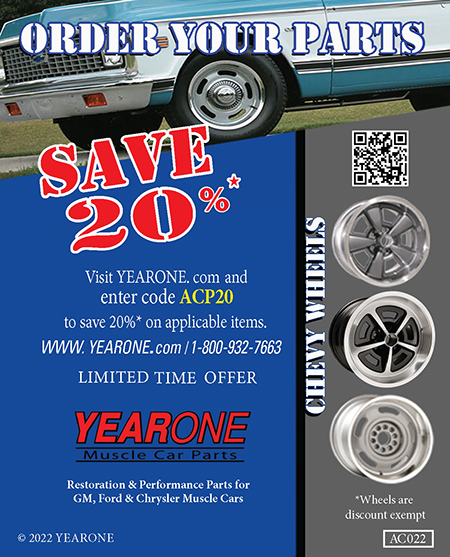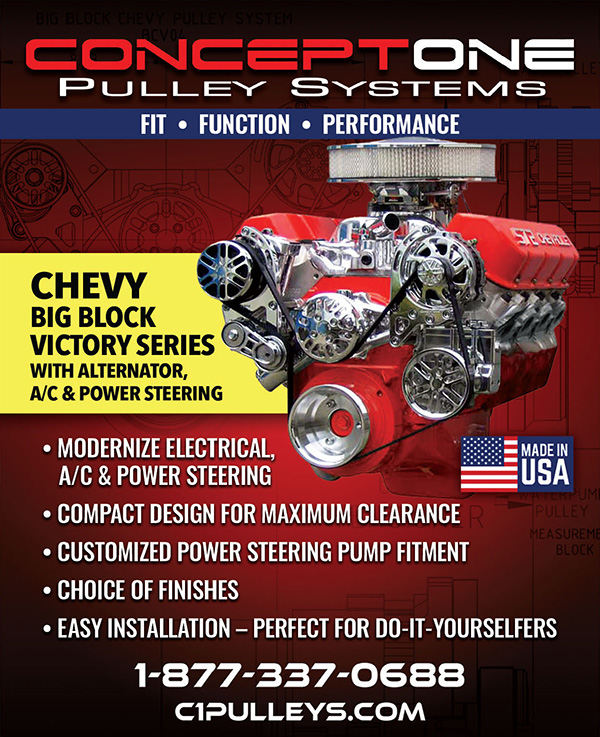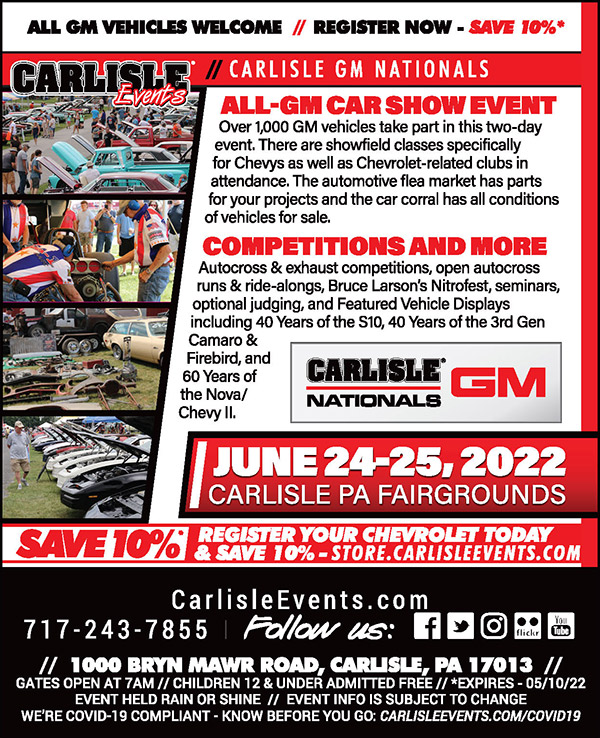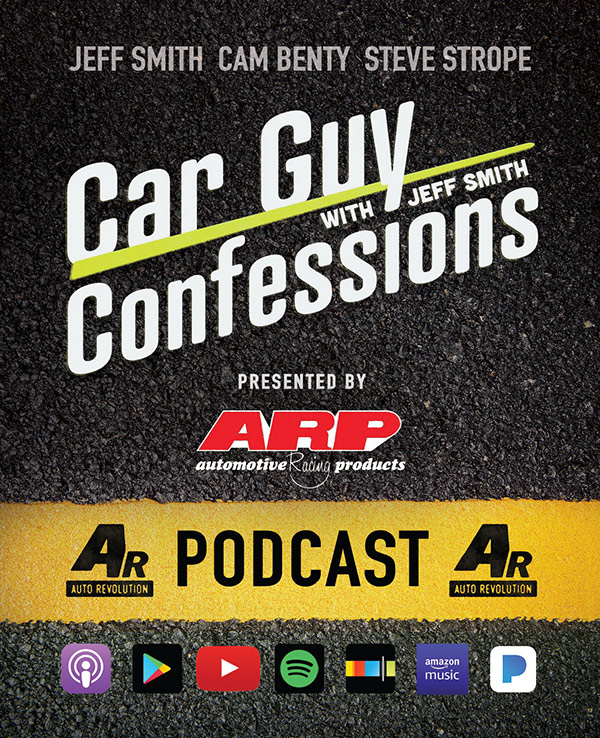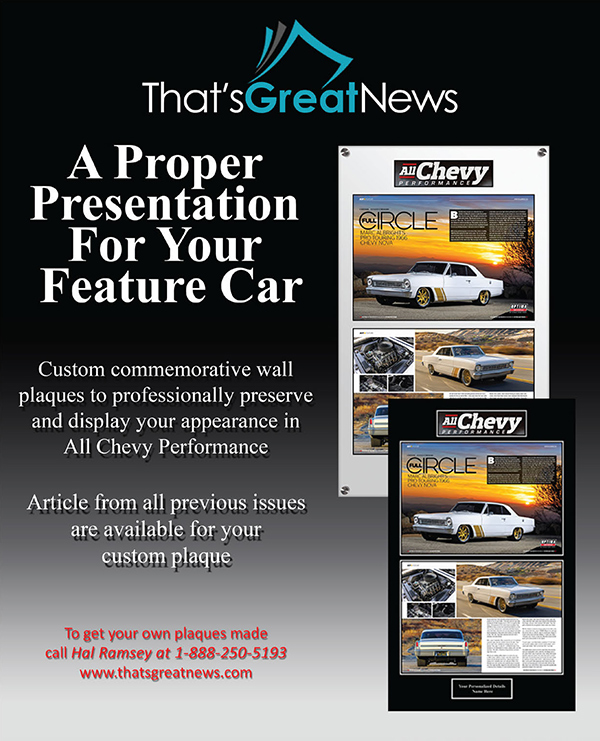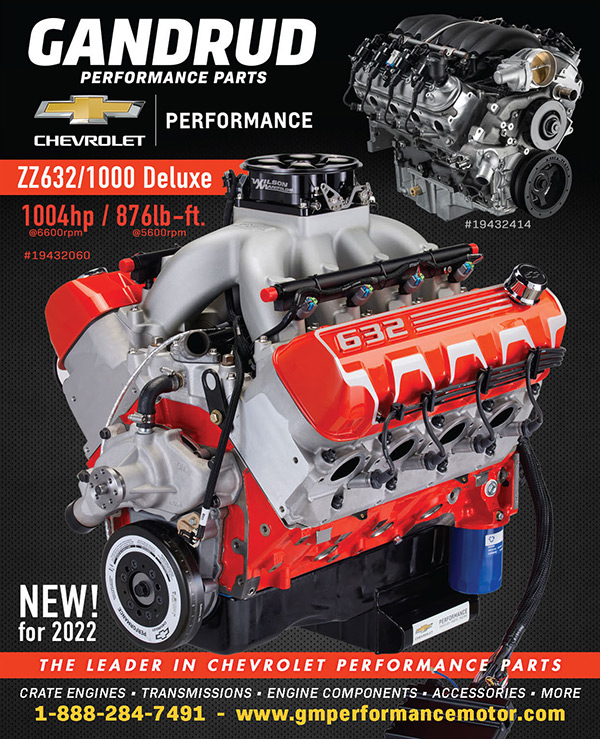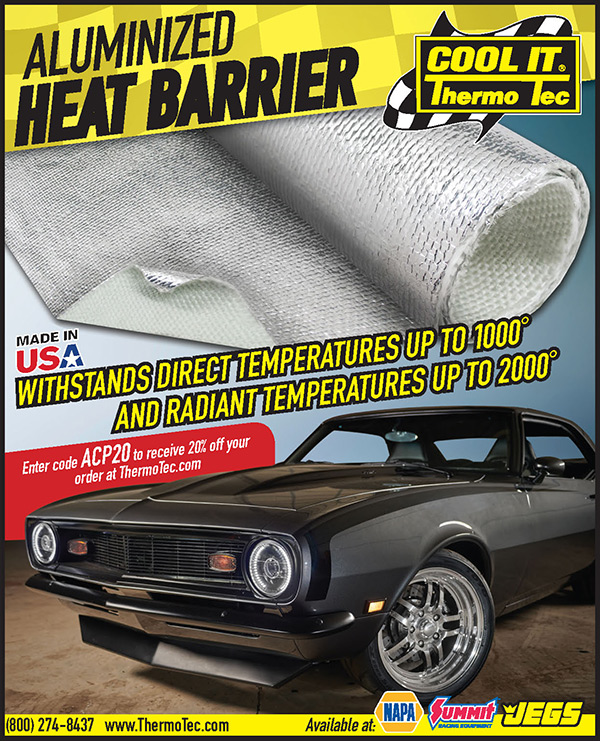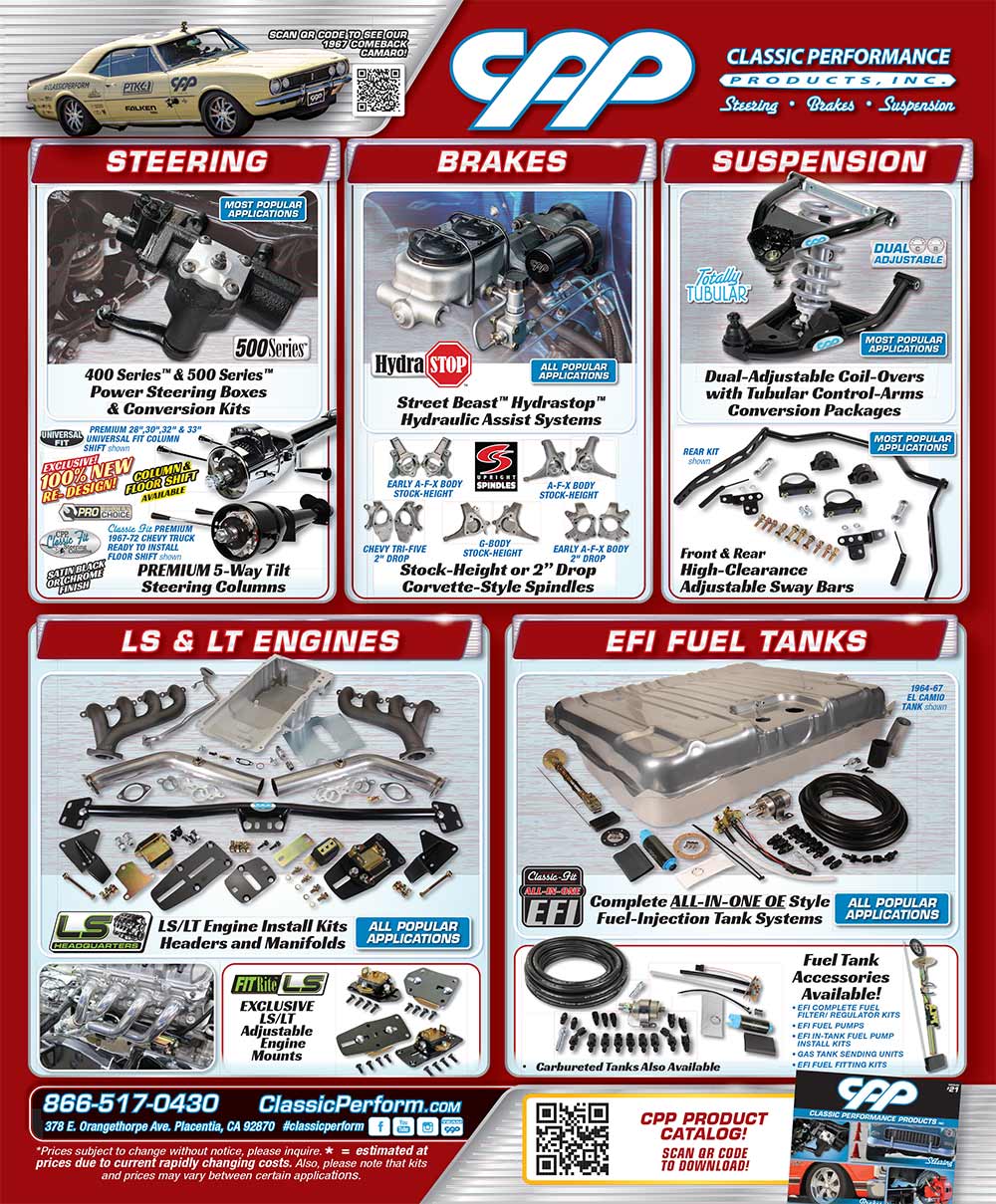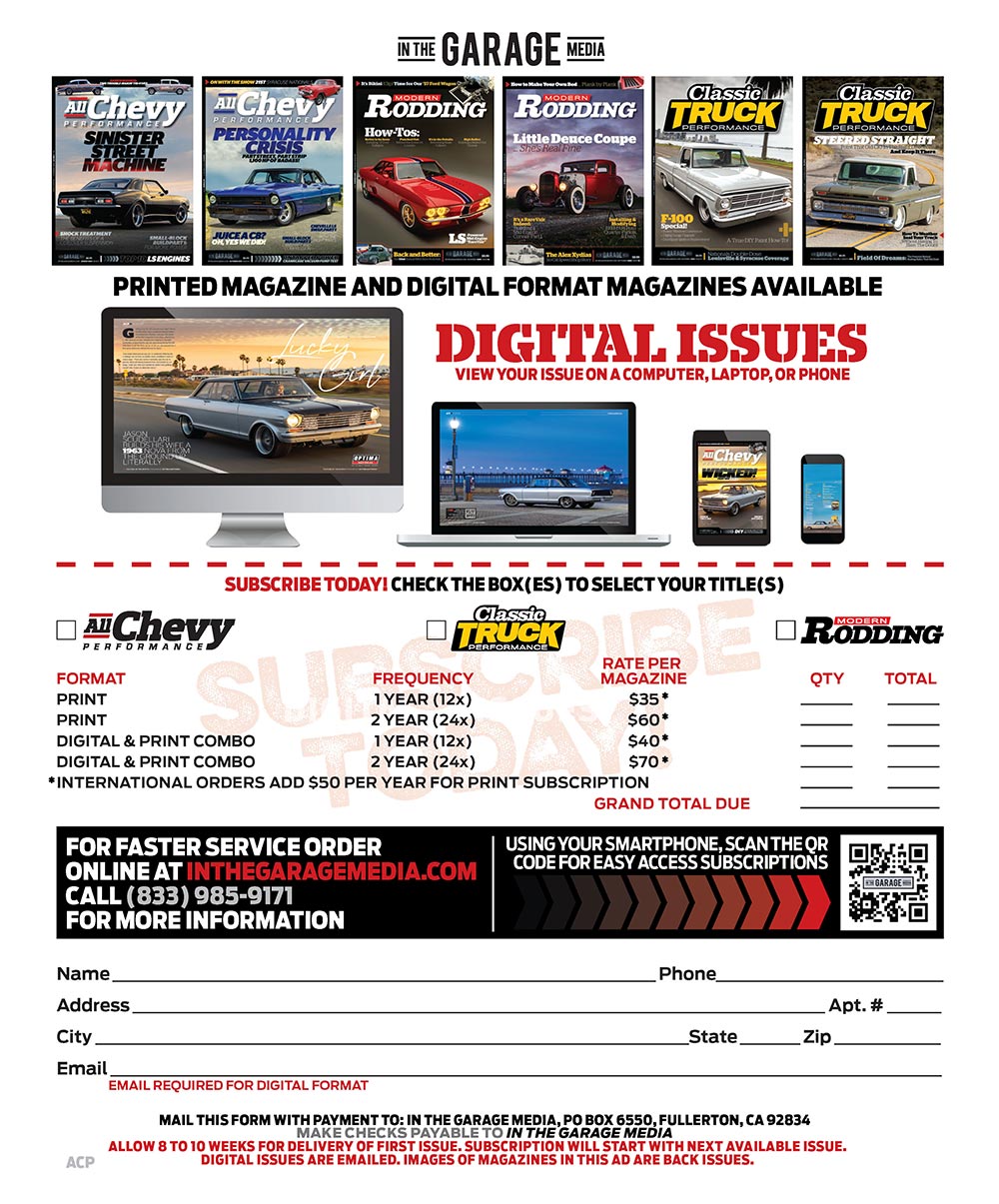 TOC
TOC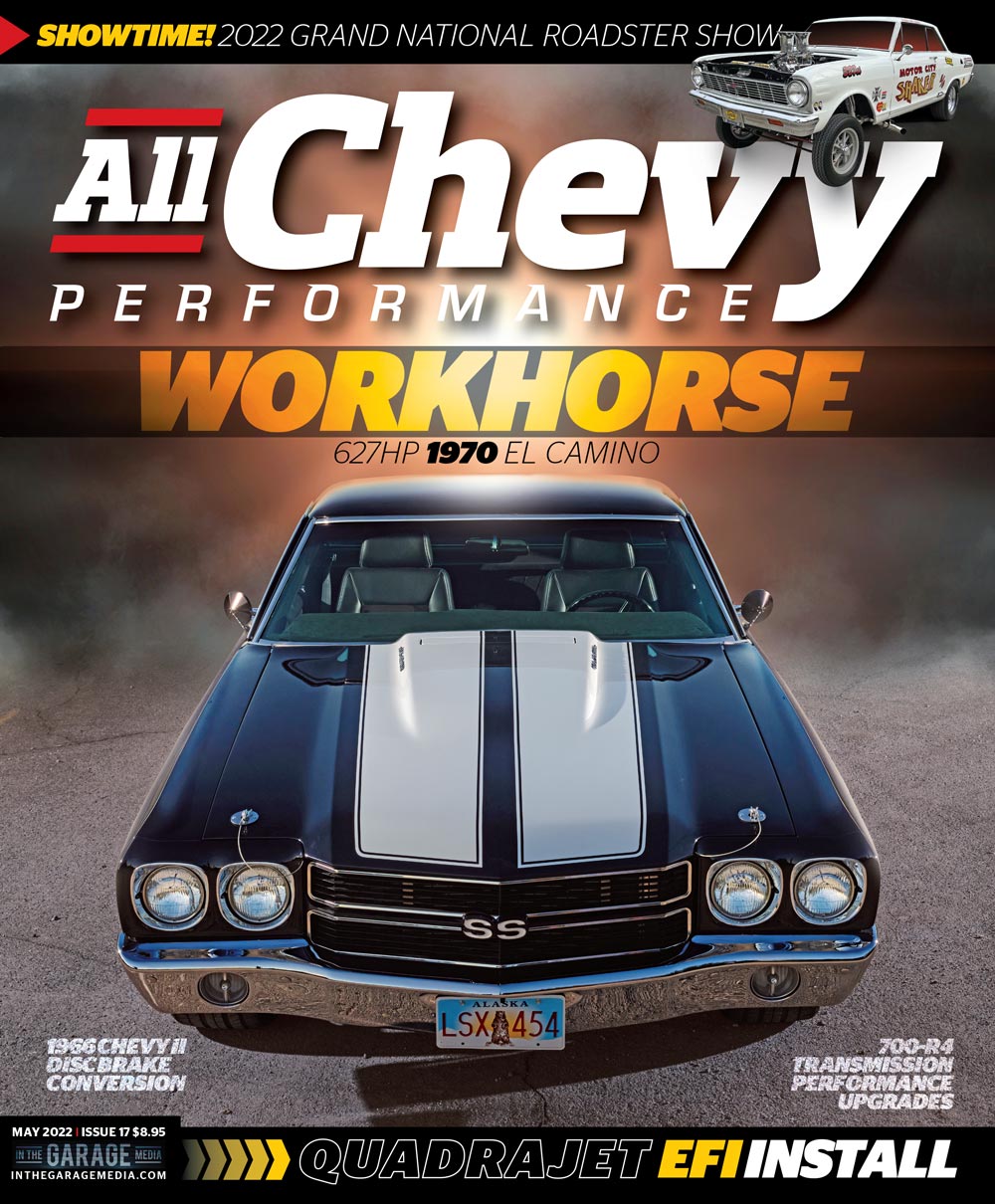
Photo by John Jackson



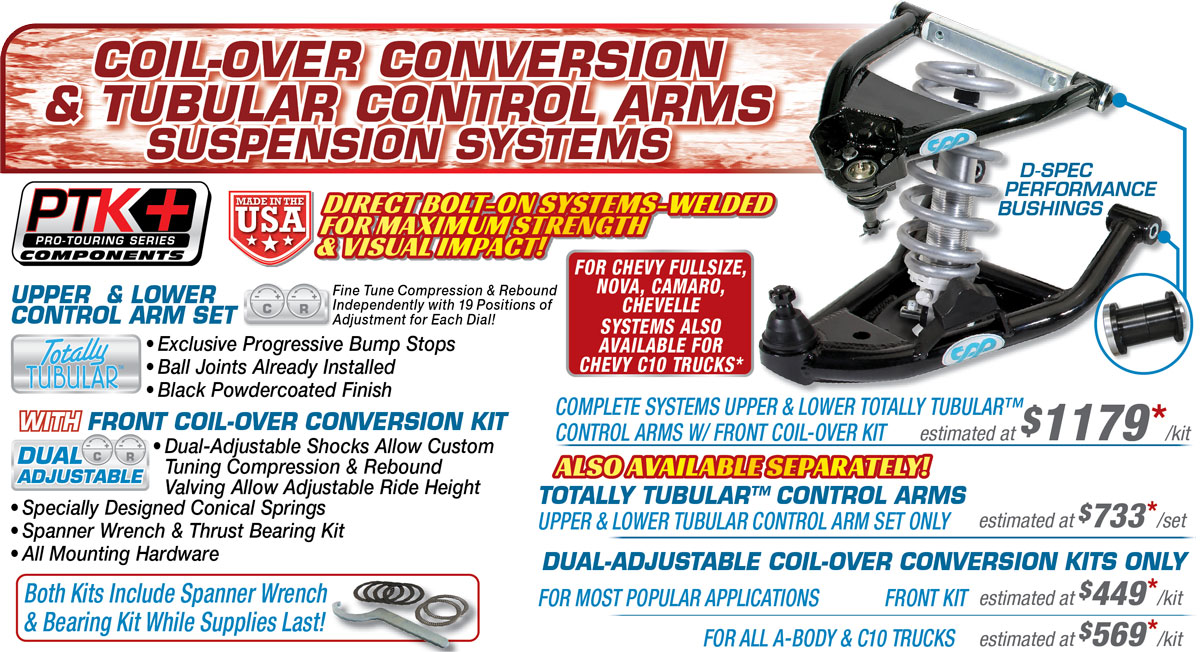
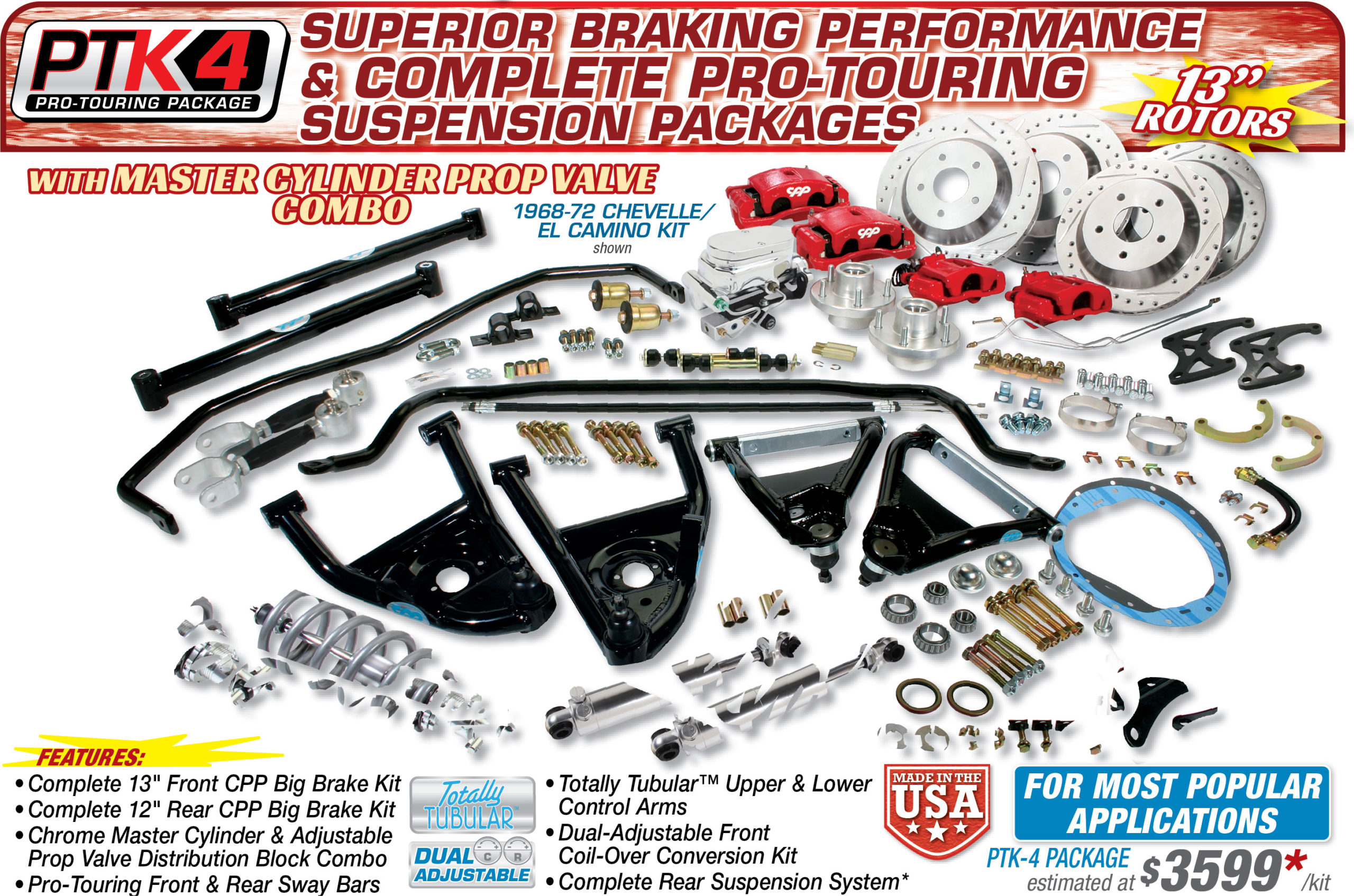
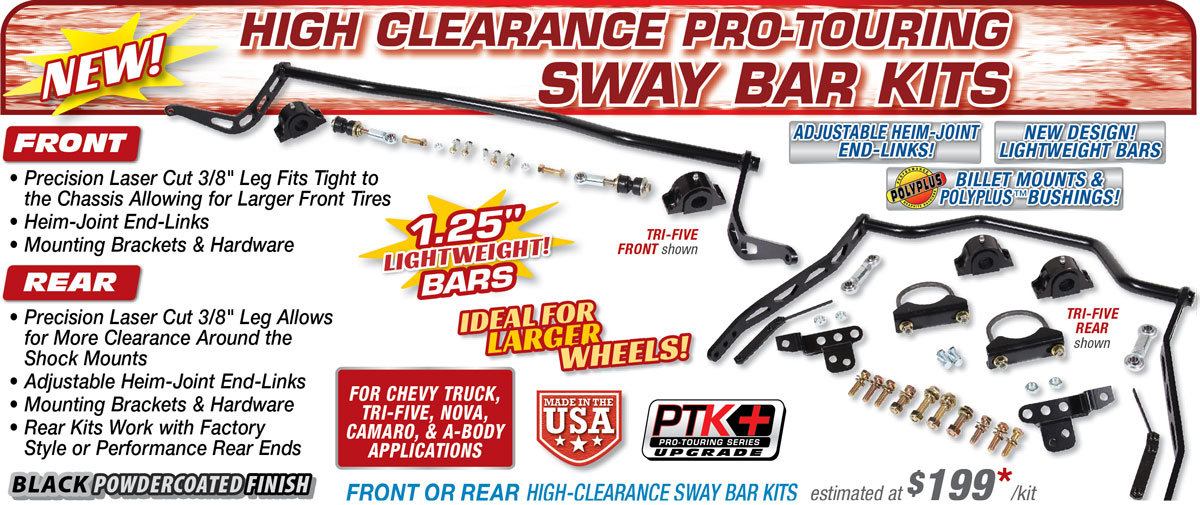

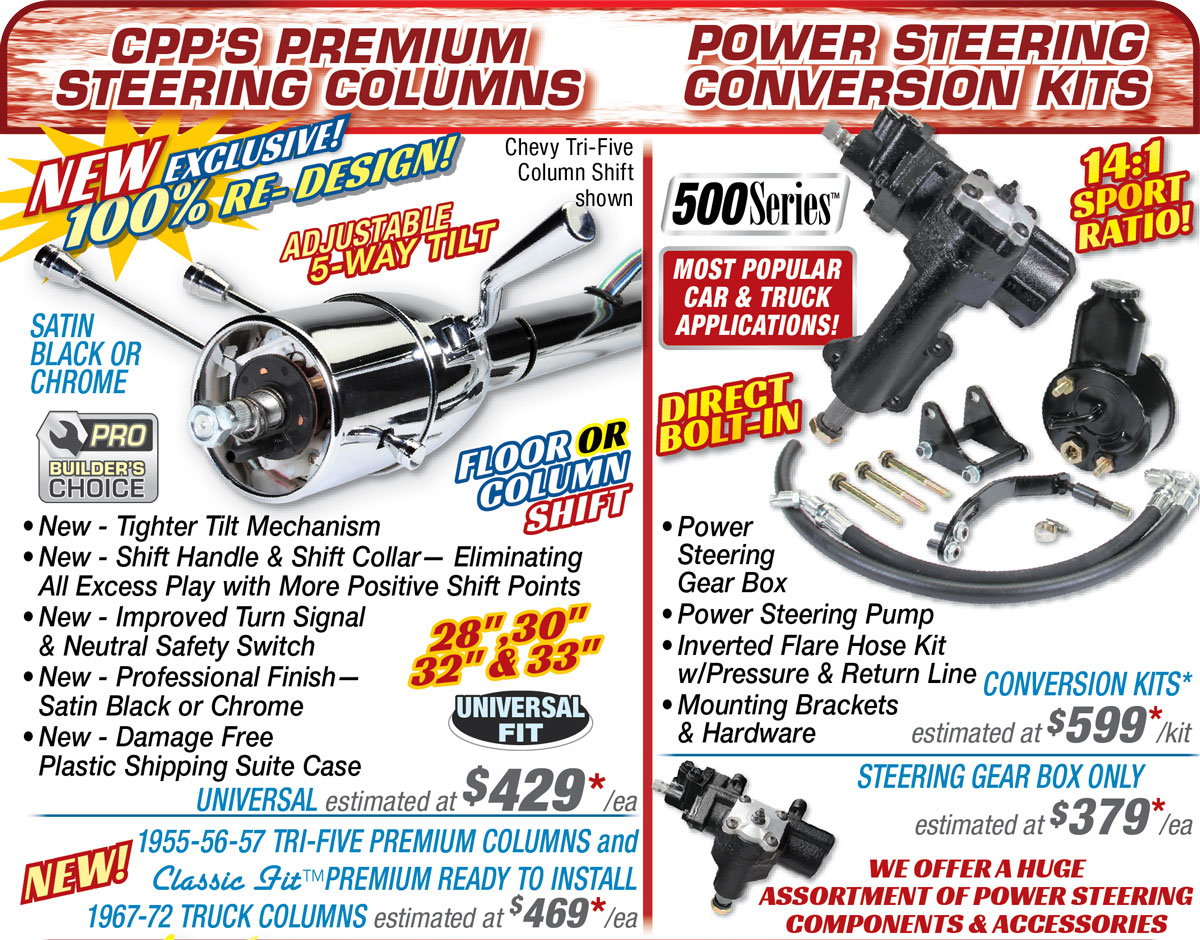
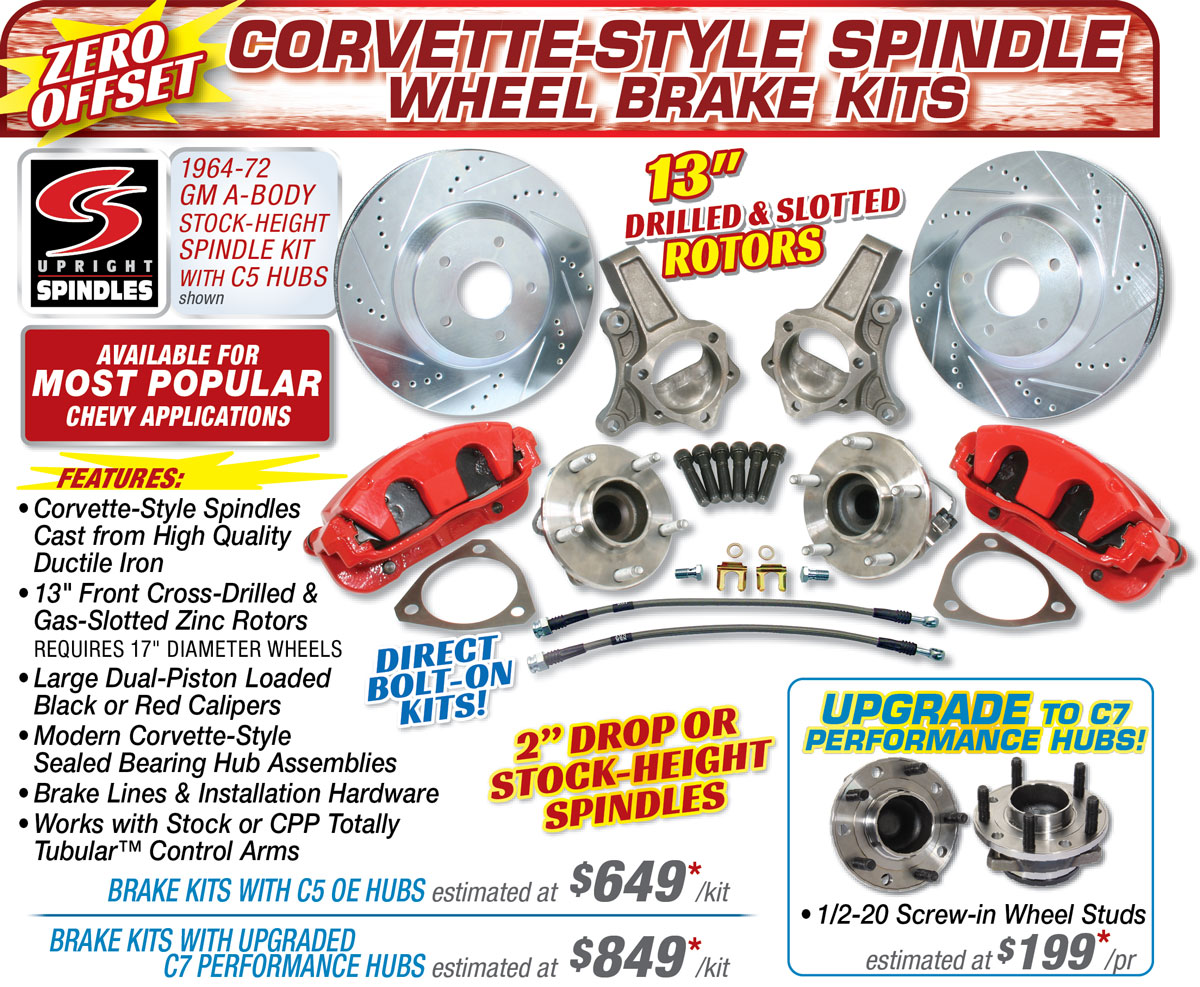
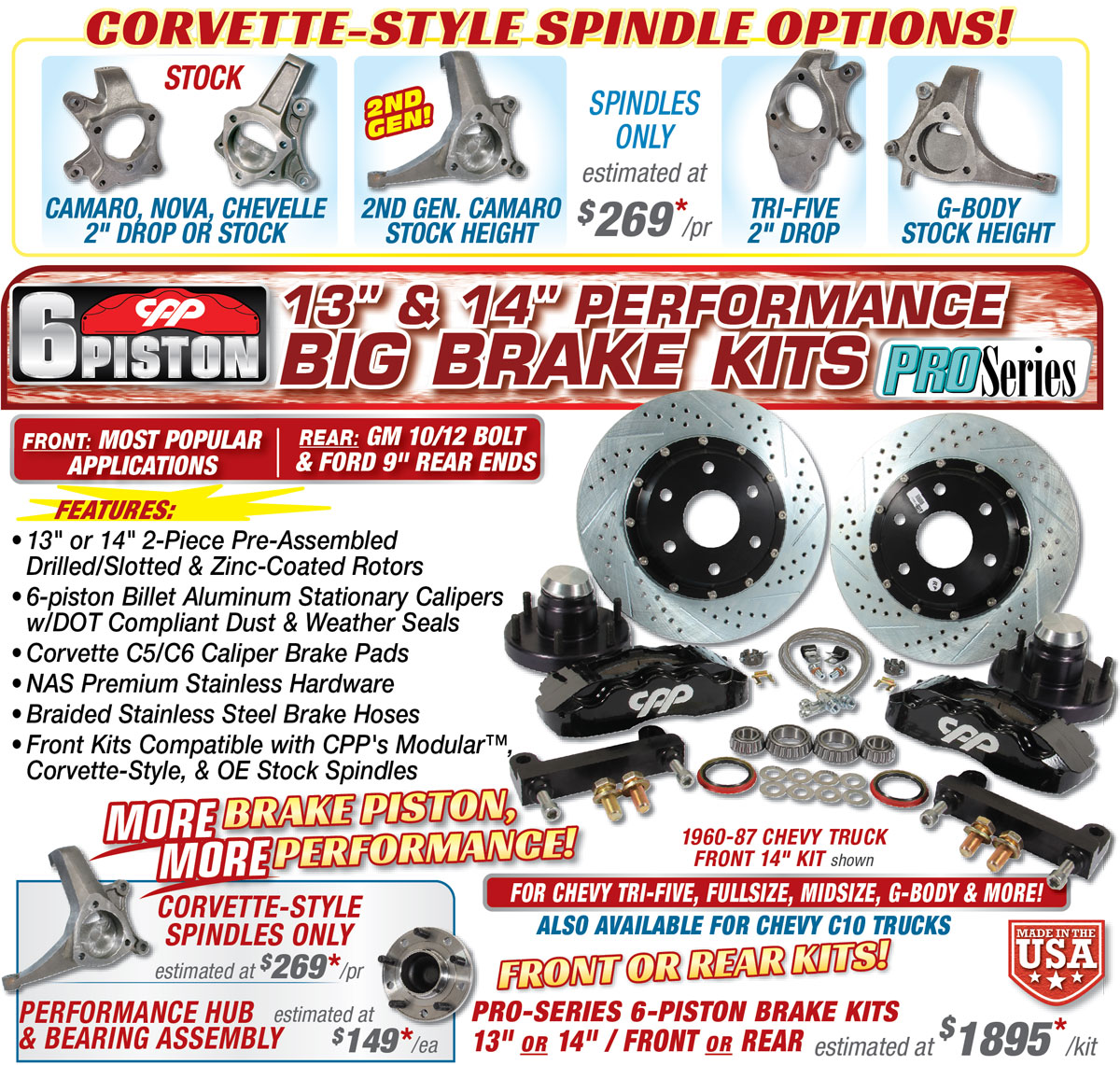

#ClassicPerform

Wes Allison, Tommy Lee Byrd, Ron Ceridono, Grant Cox, Dominic Damato, John Gilbert, Tavis Highlander, Jeff Huneycutt, Barry Kluczyk, Scotty Lachenauer, Jason Lubken, Steve Magnante, Ryan Manson, Jason Matthew, Josh Mishler, Evan Perkins, Richard Prince, Todd Ryden, Jason Scudellari, Jeff Smith, Tim Sutton, and Chuck Vranas – Writers and Photographers
AllChevyPerformance.com
ClassicTruckPerformance.com
ModernRodding.com
InTheGarageMedia.com
Travis Weeks Advertising Sales Manager
Mark Dewey National Sales Manager
Patrick Walsh Sales Representative
ads@inthegaragemedia.com
inthegaragemedia.com “Online Store”
For bulk back issues of 10 copies or more, contact store@inthegaragemedia.com
info@inthegaragemedia.com

Copyright (c) 2022 IN THE GARAGE MEDIA.
PRINTED IN U.S.A.

 FIRING UP
FIRING UP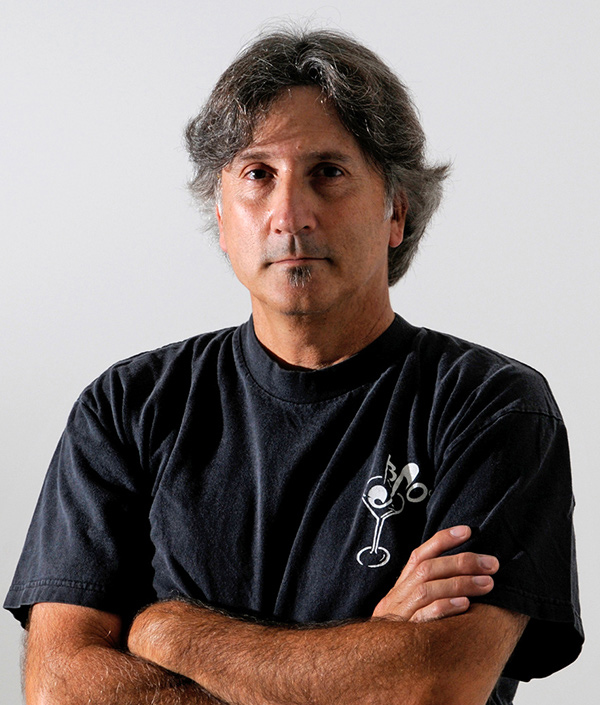
 BY NICK LICATA
BY NICK LICATA
t’s been said many times by some very wise people (people way more intelligent than myself) that variety is the spice of life. I wholeheartedly agree, which is why I usually start my morning with a hot Grande triple Cappuccino and then work my way to one or two cold triples throughout the day, pretty much every day. OK, apparently, I could use a little more variety throughout my daily routine. I’ll work on that.
So, when it comes to the muscle cars featured in All Chevy Performance magazine, we are pretty much bound to Chevys for obvious reasons, but that doesn’t stop us from covering as many build styles as possible within the brand.
We here at ACP continue to keep our eyes open to report on the latest style of cars builders are working on, and with the large number of muscle cars being resurrected these days, enthusiasts are researching and navigating a way to make their ride just a bit different from the rest. We do our best to recognize those nuances so we too can stay on top of the latest trends within the industry. Constant change is what makes this hobby thrive. And things, well, they are a changin’… for the better.
 Parts Bin
Parts Bin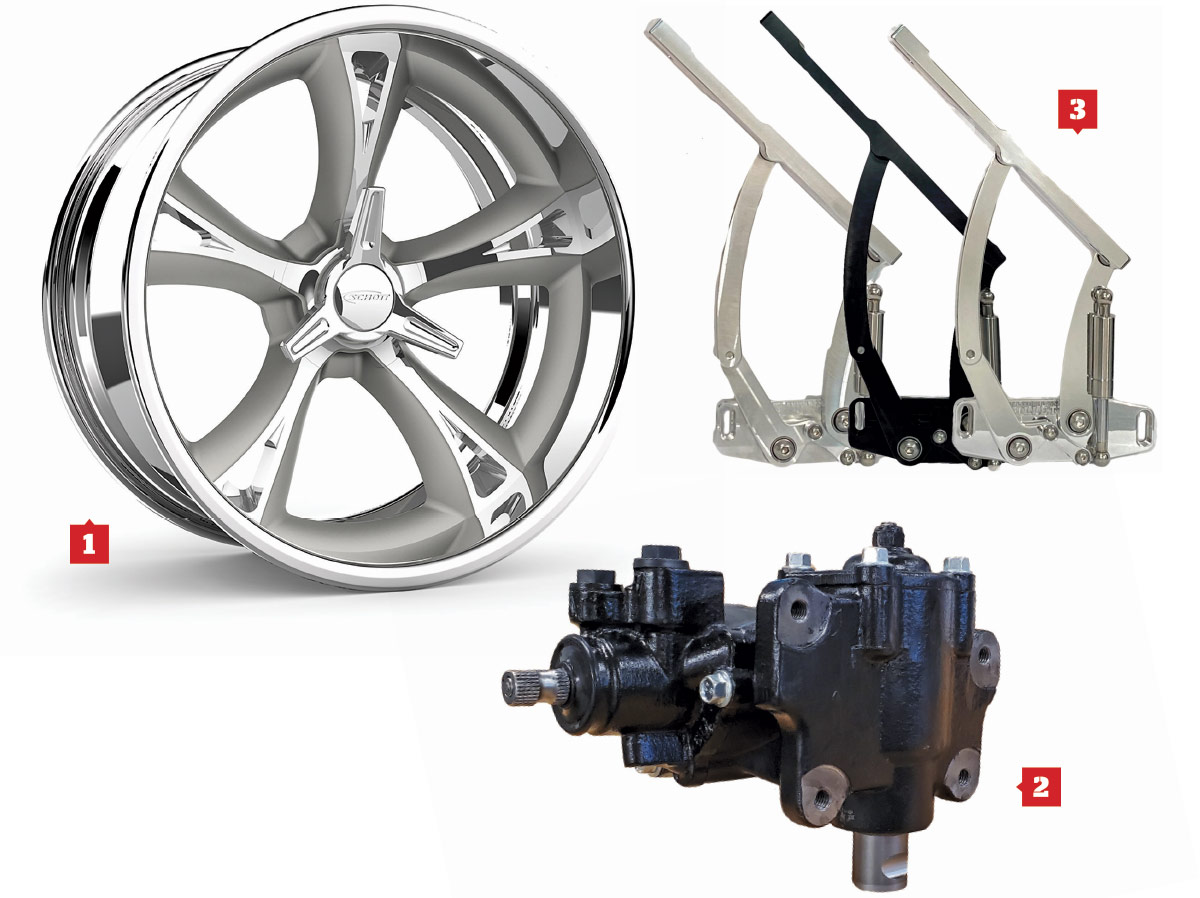
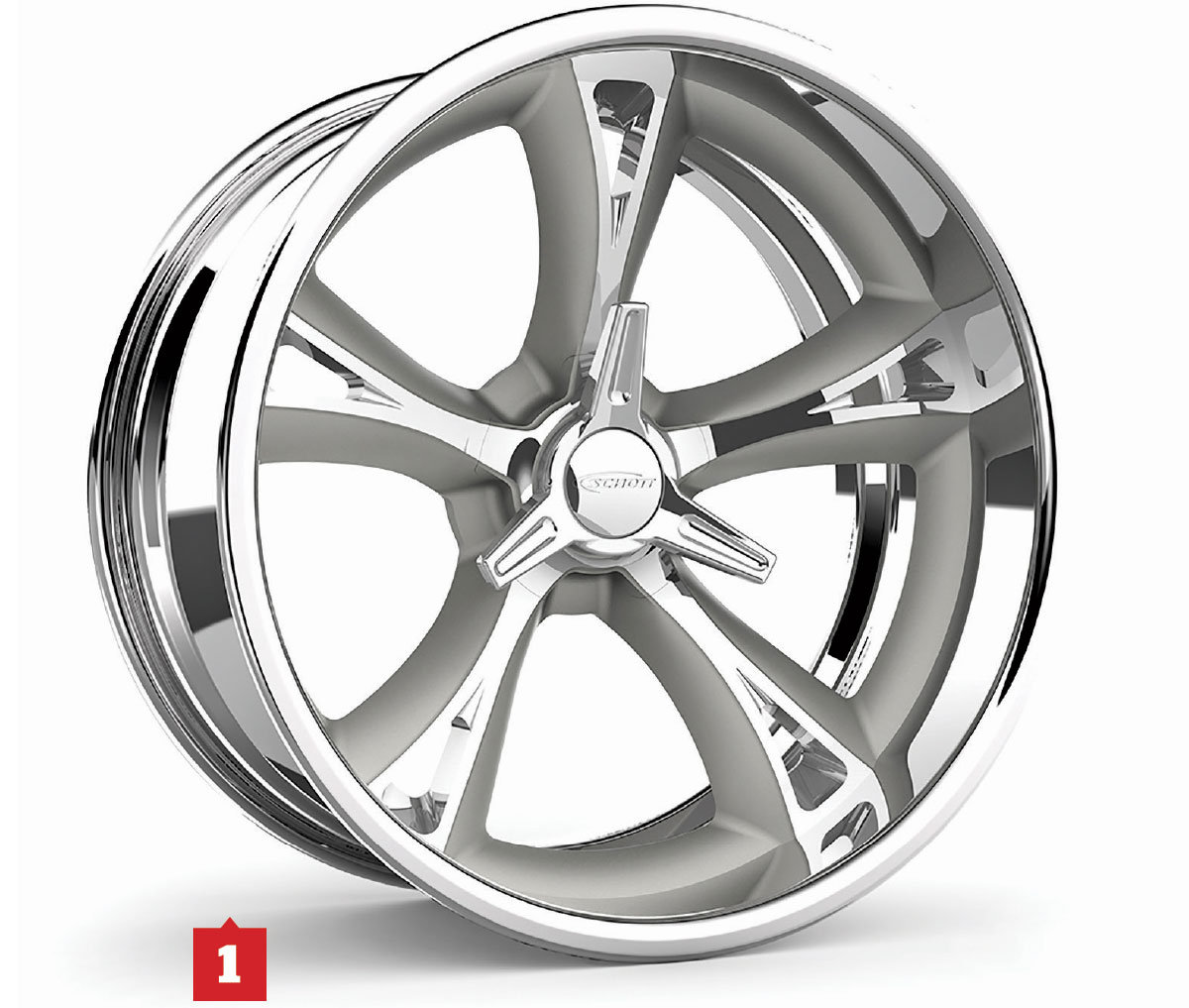
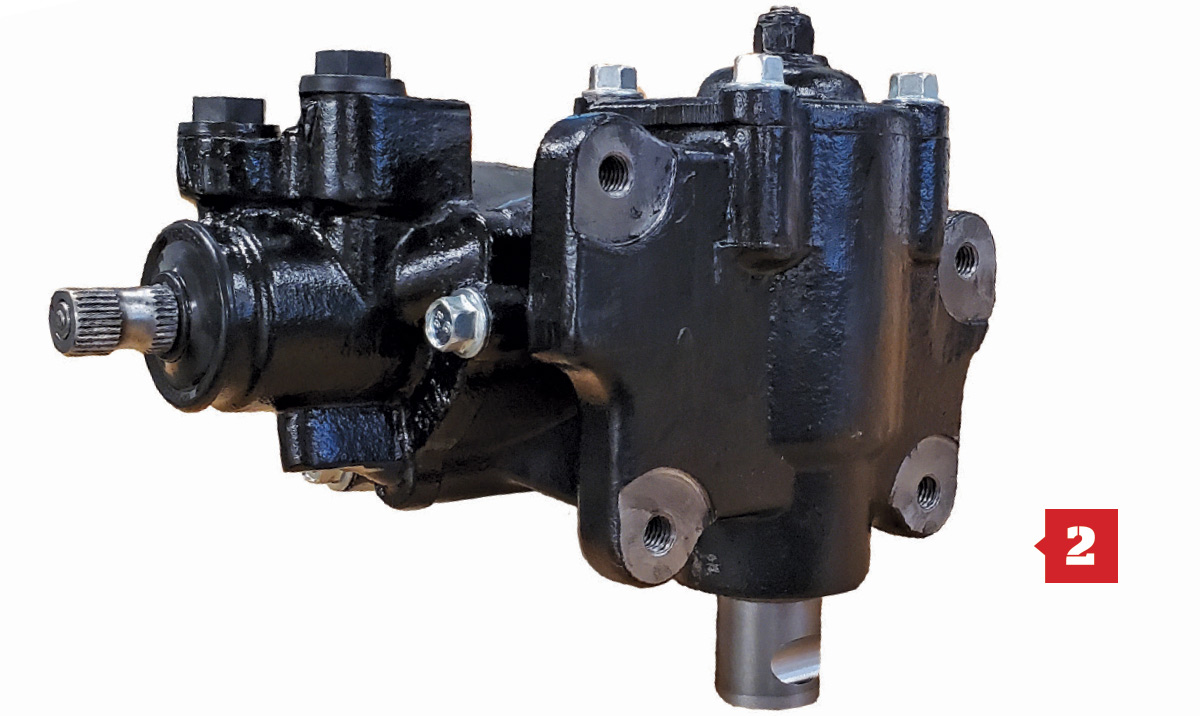
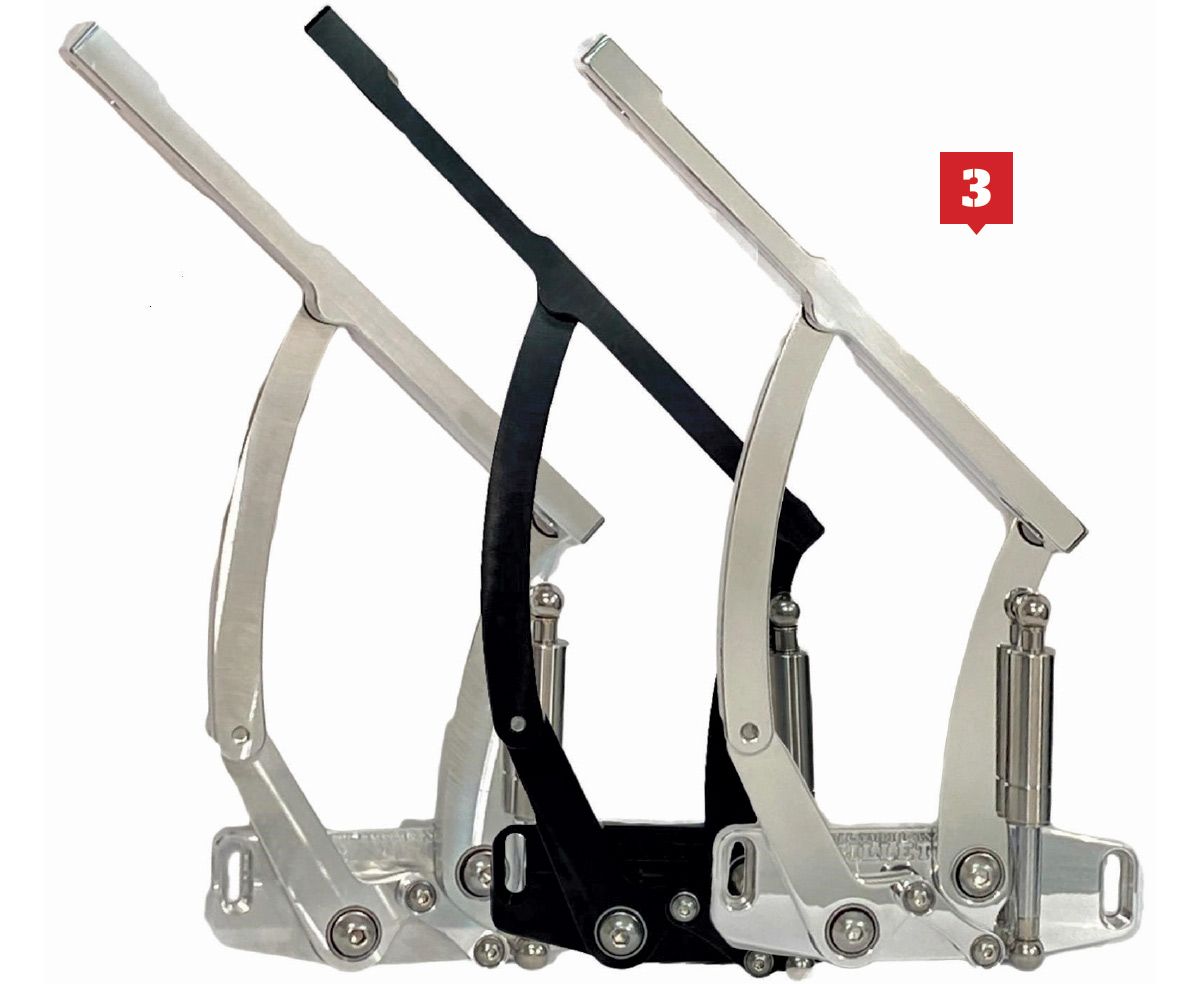
For more information, contact Schott Performance Wheels by calling (714) 891-7680 or visit schottwheels.com.
For more information, contact Borgeson by calling (860) 482-8283 or visit borgeson.com.
For more information, contact All American Billet by calling (844) 245-5381 or visit allamericanbillet.com.
 CHEVY CONCEPTS
CHEVY CONCEPTS
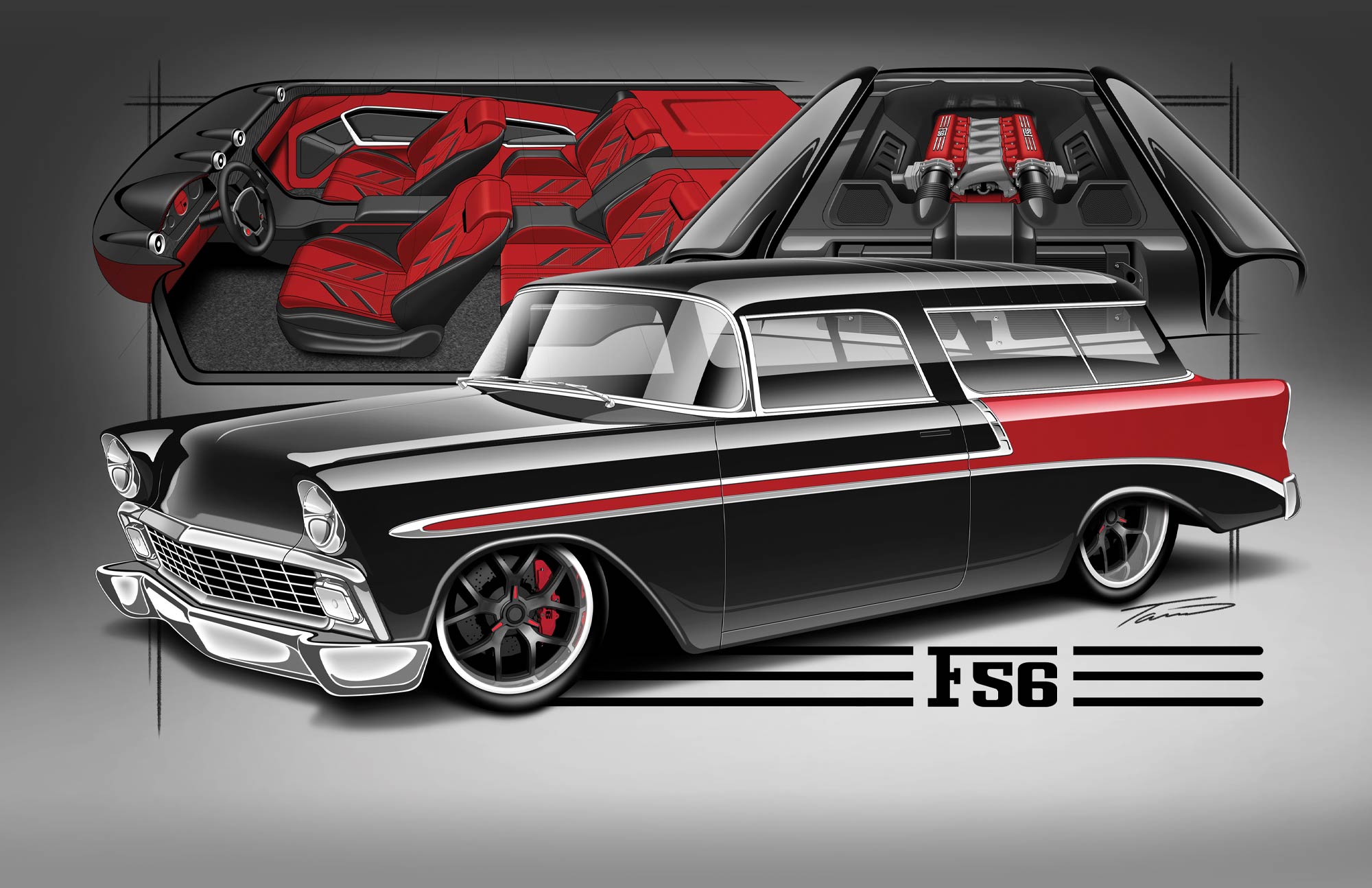
 Text and Rendering by Tavis Highlander
Text and Rendering by Tavis Highlander
first worked with Hot Rods and Hobbies on their 2018 America’s Most Beautiful Roadster award-winning ’31 Ford. If a shop can build an AMBR-winning vehicle, they can handle pretty much anything. That’s important because one of their latest projects is a ’56 Nomad injected with some Ferrari DNA.
On the outside the modifications won’t be in your face. Tightly tucked bumpers, custom trim, and Schott SL65 wheels will set the stage. A somewhat stealthy rear diffuser has been integrated into the rear bumper with a quad exhaust as well. Breathing through that exhaust is an LS engine topped with Edelbrock’s Cross Ram EFI intake. That intake will be modified to look a little more Italian with raised F56 lettering. Custom sheetmetal work will be abundant underhood, to say the least.
Inside is where the styling goes into overdrive. Modern Ferrari bits, including the steering wheel, will be integrated into the vintage space. Everything else will be hand fabricated to match the theme appropriately.
 FEATURE
FEATURE
InTheGarageMedia.com

 Photography by JOHN JACKSON
Photography by JOHN JACKSON
Dana looks at the Elco as the original crossover vehicle. “My dad used them for work, took us to school, filled the bed with trash and hit the dump, went on hunting trips, and even used them to tow our boats and snowmobile trailers,” Dana says. “They were rugged enough to handle Alaska’s extreme weather conditions–60 degrees below 0 in the winter and 80 degrees in the summer. I took my driver’s test in Dad’s El Camino, and in the summer, I’d wash it on Saturdays in hopes he would let me drive it on dates.” 
 TECH
TECH
 Photography by The Author
Photography by The Authoraking horsepower requires a special skill set, which includes attention to detail inside the engine. The outside of the engine doesn’t affect horsepower, but it can set your car apart from the others at the local cruise night. During a recent project, we gave an outdated big-block Chevy a new look, while also improving its performance capabilities. We started with a crusty 396 and didn’t make many substantial horsepower improvements, but we did help its curb appeal without spending a tremendous amount of money on dress-up items.
Many of the parts and pieces that we installed were intended to bring the engine into the modern era of performance, but those components also gave it a fresh appearance. So we combined that with cleaning and painting to create a nice-looking package for a driver-quality car. Make no mistake, this isn’t show-car stuff, as we performed these upgrades with the engine still installed in the car and we didn’t go to extraordinary lengths to refurbish any original components.
The idea was to take away the ’80s appearance by first removing the bright yellow plug wires, “braided” radiator hose covers, and rusty valve covers. We also stripped down the cooling system and removed the intake manifold to have proper access to the block and cylinder heads for a little rattle-can restoration. A fresh coat of Chevrolet Orange helped breathe some life back into the old big-block, and we were able to start installing the new parts we ordered from Summit Racing.
 FEATURE
FEATURE
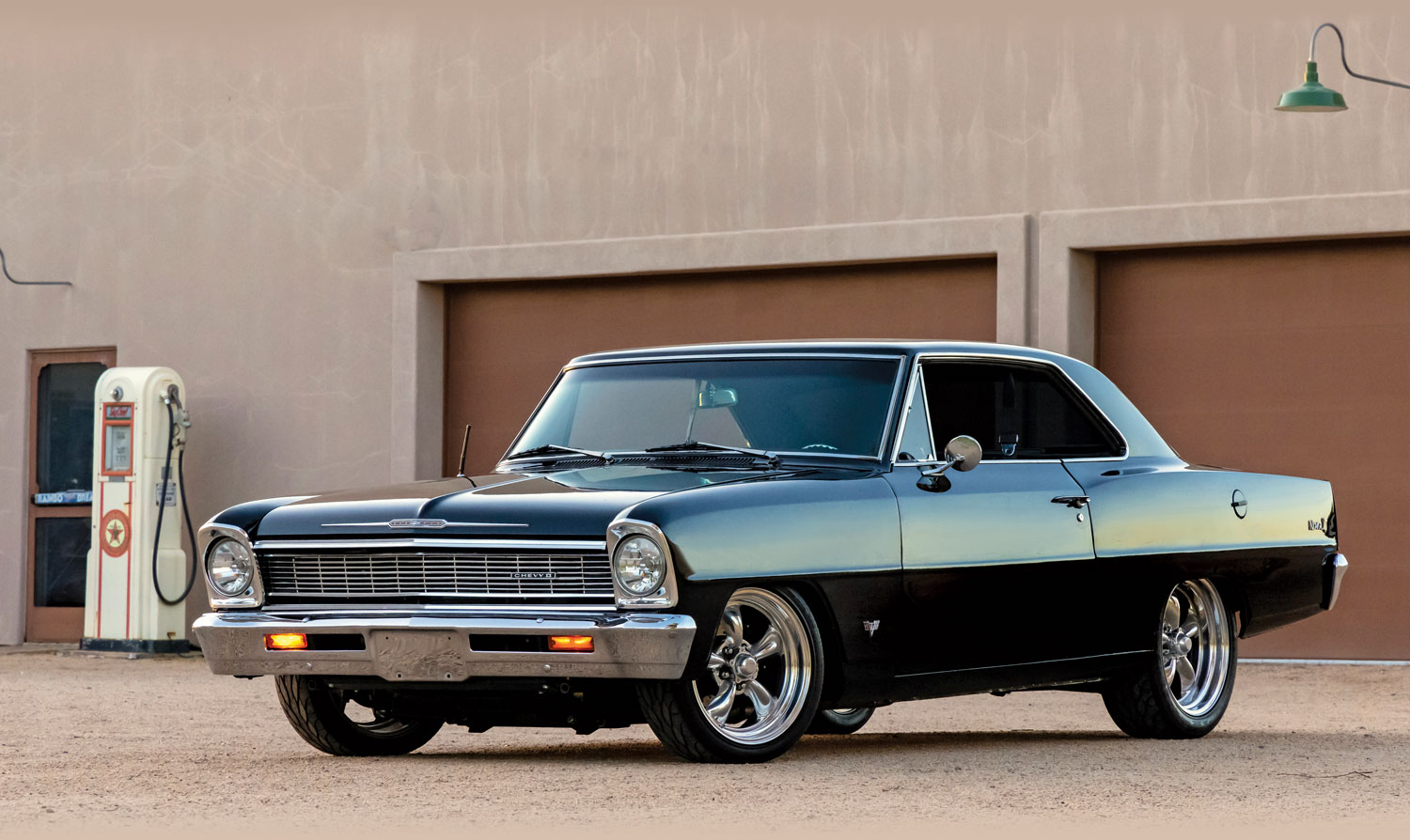
 Photography by Wes Allison
Photography by Wes Allisonhere are many avenues one can travel to find the road to hot rodding. The typical path happens in one’s formative years—not grade-school age, but more so the high school years—the time when the cranium awakens to the sound of a V-8 as it violates the brain and is readily accepted by the heart. Yeah, it sounds medically complicated but it’s really quite simple. Gearheads respond to the sound of horsepower, while others consider the rumble an outright annoyance. Tom Eckholdt is one of those who responds. The retired machine shop owner has been that way his whole life and remembers sneaking in Car Craft, Rod & Custom, Honk!, Hop Up, and pretty much all the “little” mags into his high school classes. Hiding hot rod magazines between the pages of schoolbooks is today’s equivalent of playing video games on a cell phone during history class.
Tom recalls his buddy, Dave, purchasing a ’66 L79 Nova back in the mid ’60s–a supercool car in which Tom took part in the hot-rodding process. Dave and Tom upgraded the car with Hurst linkage, 4:88 gears, ladder bars, headers, mag wheels, and a steering column–mounted tach. Ultimately, a Rochester injection system was added as well—you know, all the stuff gearheads did back in the ’60s when buying a newish car. To a young hot rodder, leaving a car stock was not an option. As Tom tells, “That car left a long-lasting impression on me, so when this ’66 Nova came up for sale, I was all over it with the idea of building a loose replica of Dave’s car from back in the day.”
 TECH
TECHInTheGarageMedia.com
 Photography by The Author
Photography by The Author
Installing Holley Sniper Quadrajet Fuel injection on a ’72 Nova
ars were meant to be driven. David Whitmer’s ’72 Nova with the ultrarare Sky Roof option is no exception. Whitmer restored the car after high school by rebuilding all the mechanical bits, replacing multiple rotten panels, and lovingly blocking the body on which he sprayed the paint.
The Nova has garnered plenty of street miles since its restoration, now with Whitmer’s wife and young daughter in tow. With even more family outings planned, more road miles to be earned, and considerably more precious cargo, it was time to up the reliability, driveability, and fun factor of the car once again. That process entailed a switch to modern, electronic fuel injection.
 FEATURE
FEATURE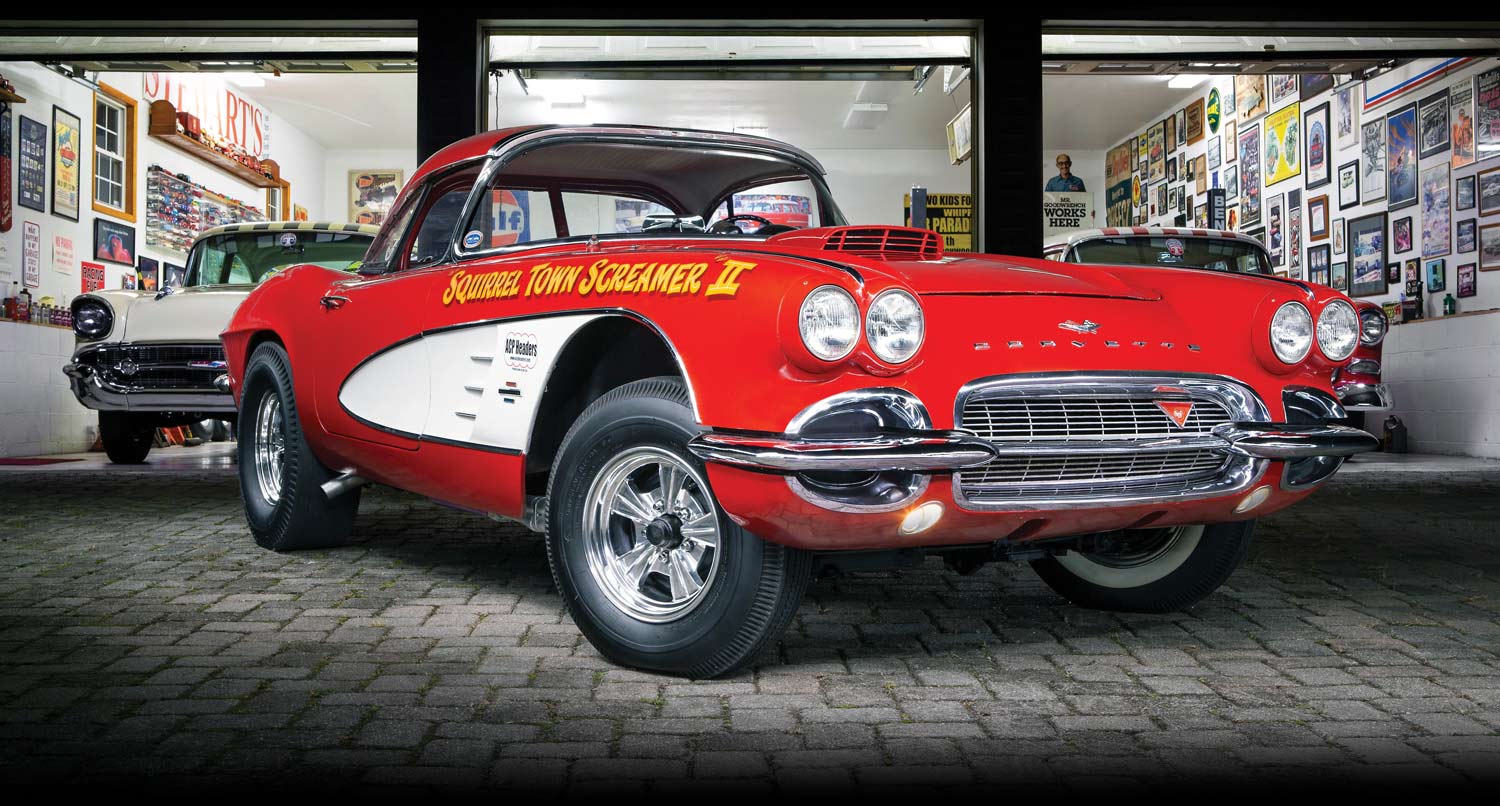

 Photography by The Author
Photography by The Authoret’s pretend you’re watching The Twilight Zone and Rod Serling says, “Imagine, if you will, in 1972, at the age of 17 you could buy a ’63 fuelie Corvette for $1,200 as your first car.” If you think that sounds like science fiction, Butch Szollosy will tell you that was science fact. Back then, C2 Corvettes could be snapped up on the cheap. While that C2 was his first ride, it was only in his possession for a short eight months—it “nickel and dimed” him to death with blown engines. As a result, it was sent to a new home and a ’69 Nova with a warmed-over 302 small-block took its place. That managed to stay with him for about two years until the urge for a Corvette returned, enticing him was a silver ’61 for sale at a local used car lot. Butch recalls, “We had an Army base in our town and the recruiter there was getting transferred so he sold the Corvette to this little used car lot. I ended up paying $1,200 for it.”
 TECH
TECH Photography by The Author
Photography by The Author
Installing CPP Power Disc Brakes on a ’66 Chevy II
raking systems changed a lot during the ’60s. It was common to see drum brakes and single-pot master cylinders well into the muscle car era, but dual master cylinders were made mandatory by 1967. It can be argued that these early systems were adequate for the time, but we can all agree that trusting your life with a single-reservoir master cylinder is not advised on today’s highways. Drum brakes aren’t quite as dangerous, but they’re not nearly as capable as disc brakes, which weren’t standardized until several years later.
 FEATURE
FEATURE
InTheGarageMedia.com

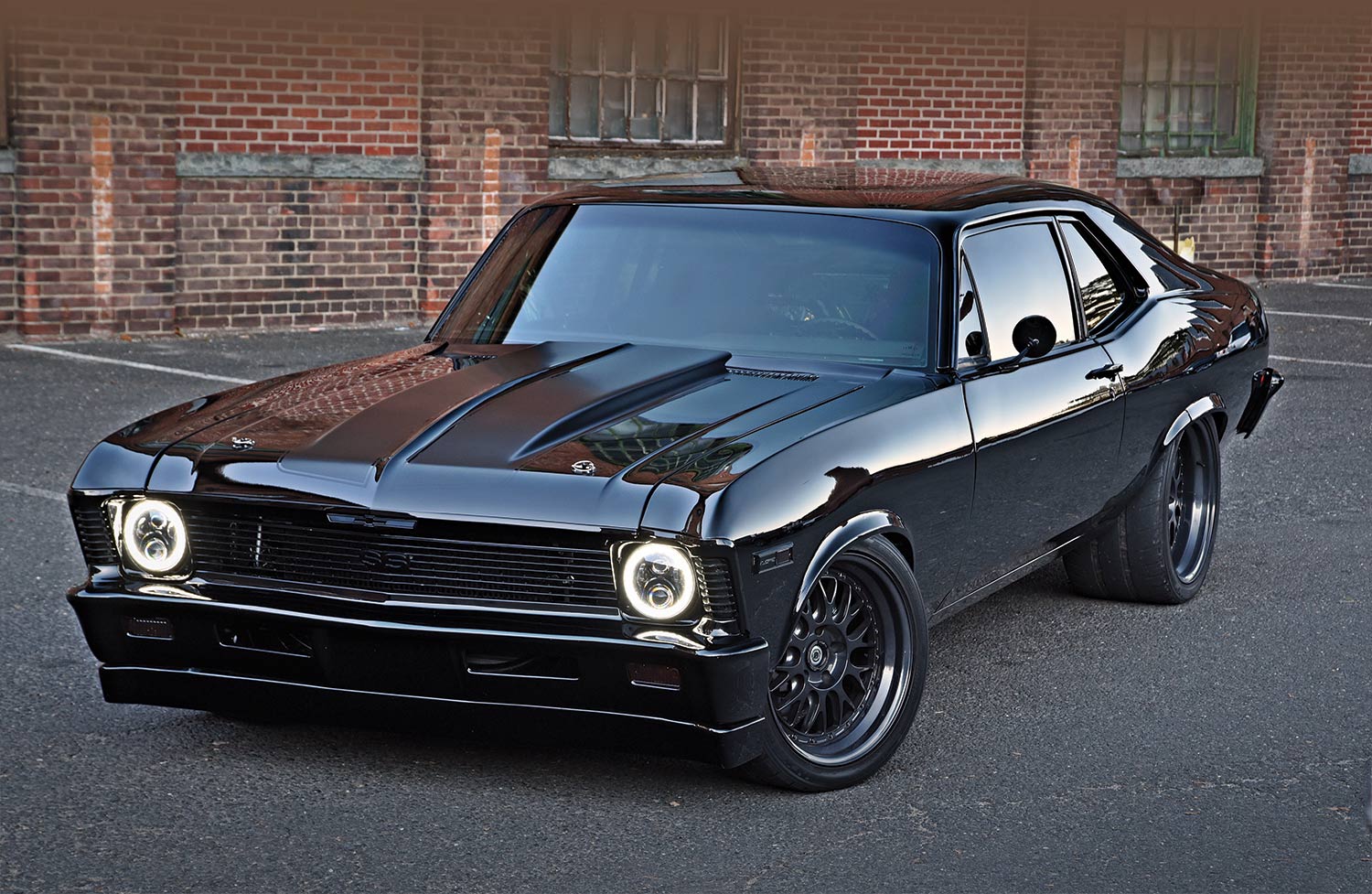
By Scotty Lachenauer  Photography by The Author
Photography by The Author
oe Tavellas’s story starts out like many of us in the automotive hobby. As he tells it: “My background on cars and fixing stuff goes back a long way. I’ve been working on my own projects since I was around 10 years old. Minibikes, dirt bikes, and quads were first on the list. A few years later, I was ready for my first car.”
Of course, there was a major “influencer” in the house, and that was his father, Joe Sr; a jack-of-all-trades and an all-around car guy. “I learned a lot from my dad growing up and was always interested in what he was working on at the time. And it was usually a Chevy,” Joe states.
However, as he got into his teens, his preferences changed. “Oddly enough, at the age of 16, the craze with my generation was the Honda Civic Bubble Hatchback. I remember telling my father I wanted one. He said ‘no way …’ but if you want a hatchback, you should get a VW Golf. Long story short, we got a VW for $800, and that’s where it started for me.”
 TECH
TECH Photography by The Author
Photography by The Authorhe world is full of compromises. What we’d really like to run in our next Chevelle Pro Touring project is a GM eight-speed automatic with a paddle shifter behind a killer all-aluminum 427 LS engine cranking 700 normally aspirated horsepower. That’s what we’d really like to do.
But the harsh reality of life points to a powertrain that must be a bit more conservative that includes a carbureted small-block Chevy and a basic, 30-spline, 700-R4 four-speed automatic. The overdrive trans promised decent street performance after a freshening but we were hesitant to employ it after witnessing a string of poor experiences with TV cable snafus on two different friends’ cars.
 FEATURE
FEATURE
 Photography by The Author
Photography by The Authorot rod, muscle car, and custom-loving fiends alike in the Phoenix vicinity know Dean Livermore’s name all too well. Hot Rods by Dean (HRBD) has proven to be the go-to shop in the region, and with 60 years of combined experience between Livermore and his team of talented fabricators and builders, there’s no doubt that these guys can handle any job on any car. Luckily for Bryan Oates, also a Phoenix native, he didn’t have to take his project car far to have it checked into HRBD for a full overhaul and more. Luckily for the guys at the shop, Bryan’s car just happened to be one of their collective favorite platforms: a ’69 Camaro. In the world of classic American muscle cars, it doesn’t get much sweeter than this.
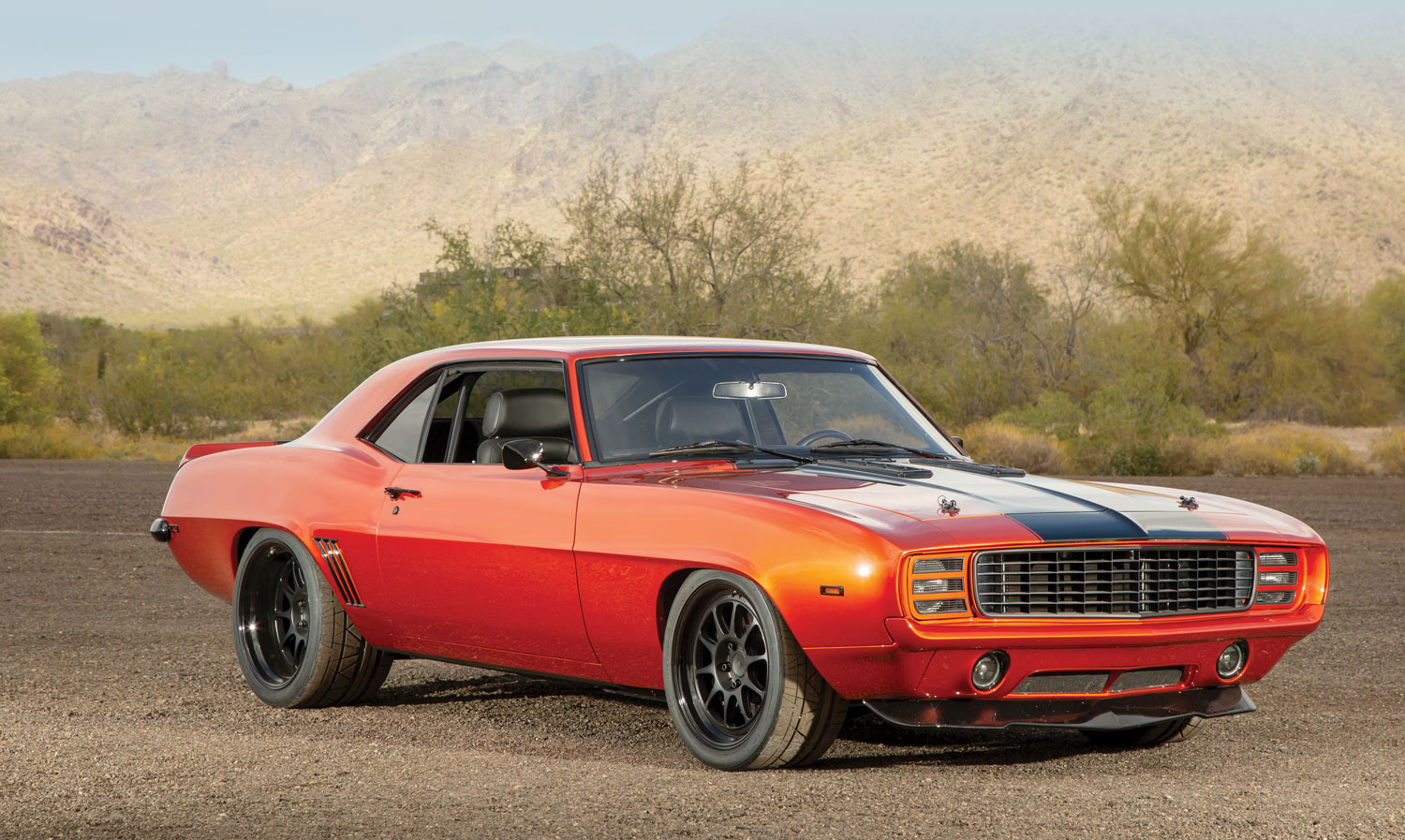
 EVENT
EVENT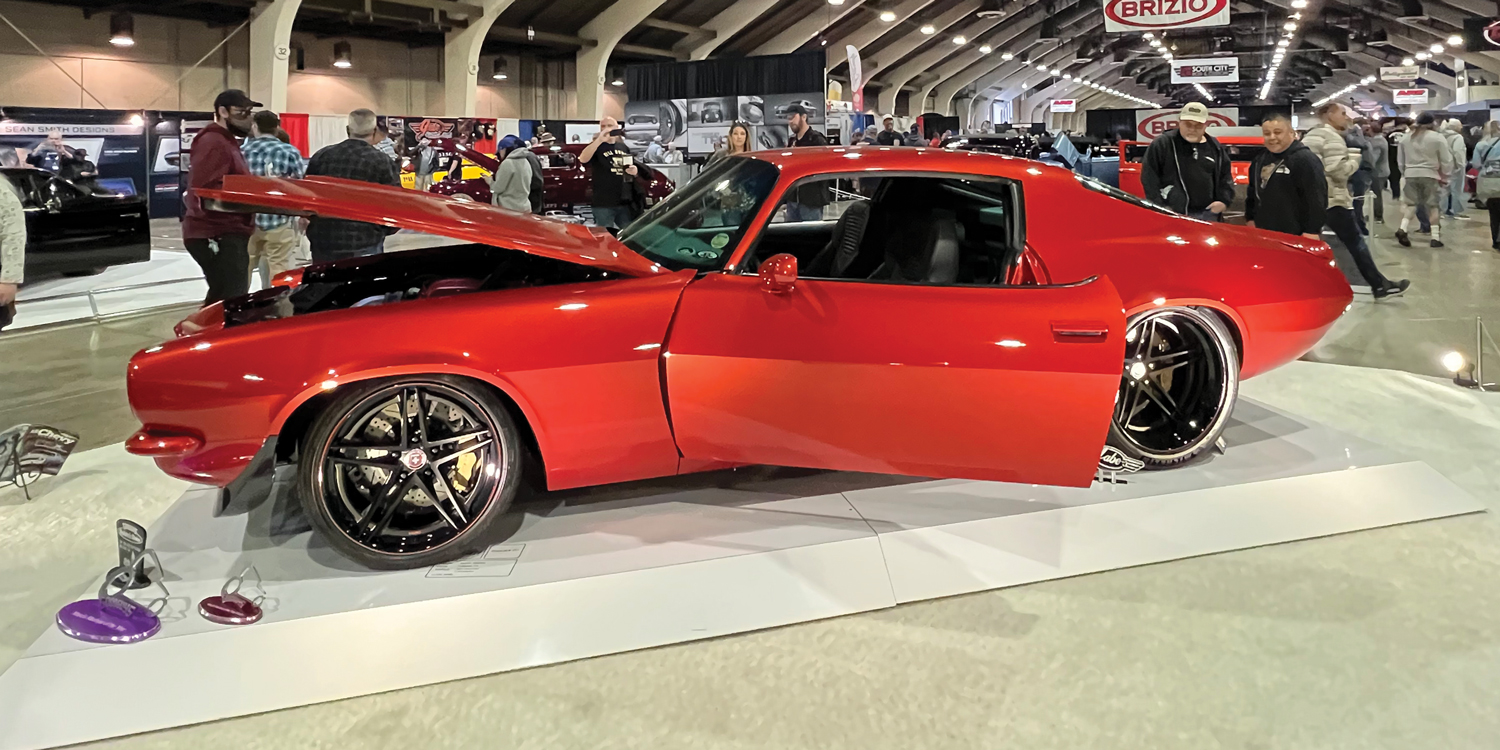
 Photography by The Author
Photography by The Authorhe Grand National Roadster Show (GNRS) is one of those events we mark on our calendar a year ahead as a “must-attend.” The GNRS is held the final weekend in January at the Pomona Fairplex in Southern California. The venue has a long history of hot rodding as it is also home to the NHRA Winternationals, which began in 1961, and World Finals since 1984, the Wally Parks NHRA Motorsports Museum, as well as the highly popular Pomona Swap Meet & Classic Car Show. Needless to say, the Pomona Fairplex is hallowed ground for hot rodding, drag racing, and pretty much anything automotive related.
Started in 1950, the National Roadster Show called various Northern California locations home over the years (in 1963 “Grand” was added to the name), when the event was moved to Southern California’s Pomona Fairplex in 2004. Today, the GNRS consumes seven massive exhibit halls and draws arguably the best of the best high-end vintage hot rods from all over the country—most of which are competing for the elusive America’s Most Beautiful Roadster (AMBR) award as well as other various class awards.
Yes, the word “roadster” is in the event title, and, yes, there are plenty of roadsters on display, but this show offers a wide variety of classics, too. We’re talking muscle cars, customs, lowriders, hot rods (patina and shiny), and pretty much everything in-between. And with the multitude of brands being represented, there is something to satisfy the palate of just about every classic auto enthusiast.
Advertiser
- Aldan American73
- American Autowire7
- American Camaro Association81
- Art Morrison Enterprises35
- Auto Metal Direct55
- Auto Revolution Online85
- Automotive Racing Products39
- Borgeson Universal Co.27
- Bowler Performance Transmissions81
- Carlisle Events85
- Classic Industries47
- Classic Performance Products4-5, 81, 92
- Concept One Pulley Systems85
- Custom Autosound75
- Dakota Digital91
- Duralast Parts13-Dec
- Eddie Motorsports53
- FiTech EFI11
- Flaming River Industries41
- Gandrud Chevrolet87
- Granatelli Motor Sports71
- Heidts Suspension Systems71
- Holley Performance Products65
- John’s Industries85
- Lokar2
- National Street Rod Association57
- Original Parts Group33
- Powermaster Performance67
- Scott’s Hotrods65
- Speedway Motors49
- Strange Engineering75
- Summit Racing Equipment9
- Thermo-Tec Automotive87
- Trick Flow Specialties67
- Tuff Stuff Performance Accessories73
- Vintage Air6
- Wilwood Engineering25
- Year One81
 BOWTIE BONEYARD
BOWTIE BONEYARD![]() Consumer advocate Ralph Nader took advantage of the ’60-64 Corvair’s tail-happy “Quadri-Flex” suspension in his Nov. ’65 book Unsafe at Any Speed, making the van version an outcast among van crazies of the ’70s. This ’61 features the extremely rare EIGHT DOOR body. That’s right, there are loading doors on both sides of the body! By the way, GM redesigned the ’65-69 Corvair with Corvette-like articulated rear-axle half-shafts that improved handling, but the damage to Corvair’s image was done and we’ve never seen a customized example.
Consumer advocate Ralph Nader took advantage of the ’60-64 Corvair’s tail-happy “Quadri-Flex” suspension in his Nov. ’65 book Unsafe at Any Speed, making the van version an outcast among van crazies of the ’70s. This ’61 features the extremely rare EIGHT DOOR body. That’s right, there are loading doors on both sides of the body! By the way, GM redesigned the ’65-69 Corvair with Corvette-like articulated rear-axle half-shafts that improved handling, but the damage to Corvair’s image was done and we’ve never seen a customized example.
 Photography by the Author
Photography by the Authorf you were alive in the ’70s, you’ll remember the so-called “van craze.” Around 1974 former hot rodders, car magazine editors, and car people in general realized that Detroit was having an identity crisis over the combined threats of an energy crisis and an upswing in sales of fuel-efficient foreign and domestic compact and sub-compact cars.
Though traditional hot rodding carried on, those interested in obtaining pre-assembled factory hot rods had little to choose from. Understanding that eye appeal was just as important to these folks as brute power, vans started to look pretty good as a “vehicle” for self-expression. And thus, folks embraced domestic vans as their blank canvasses upon which to strut their stuff.
The main features of this new show were custom murals, (usually) fake side pipes, jacked-up rear axles, skylights, fender flares, wide “boots” (we call them tires again today), and add-on plastic bubble side windows shaped like teardrops, domes, diamonds, half-moons, and you-name-it designs.

